4. Biochromes¶
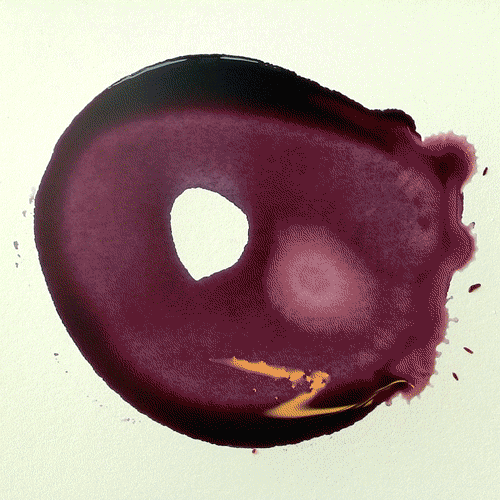
Credit: Claire Harbage/NPR
This week we'll be working with living colours. Whereas Rhino and the laser cutter were my biggest enemies at the start, I missed them a little at first of this week, only to be enchanted with the biochromes during this week. Below, you'll find my inspiration (and newly discovered love for inks); my research into the engineer-like, hard scientist Newton and the romantic artist and humanities based Goethe; my first colour chart as well as the documentation of this colourful week. I loved it!
End Results¶

Just LOVE the purple pigment!
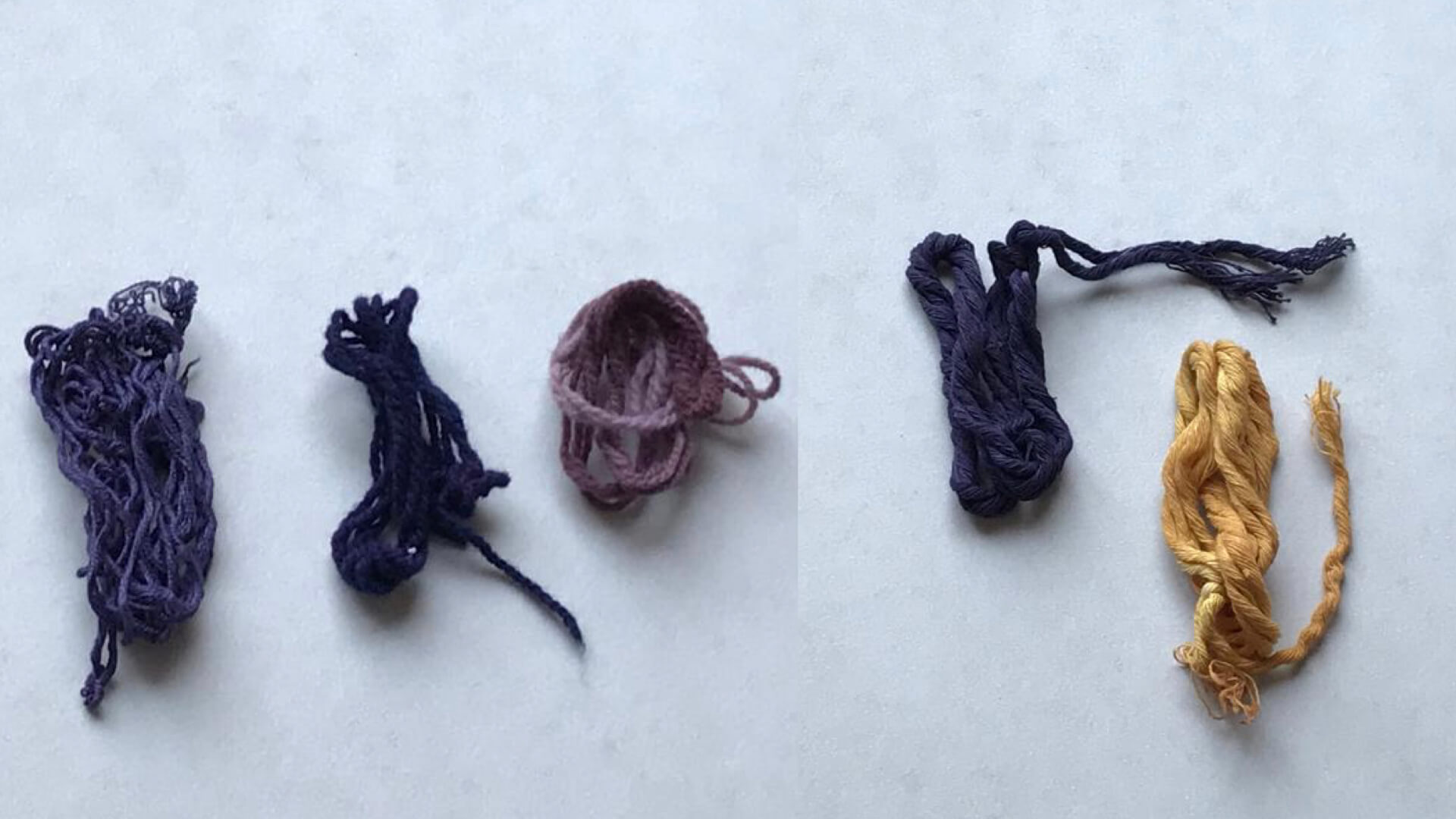
Different types of yarn
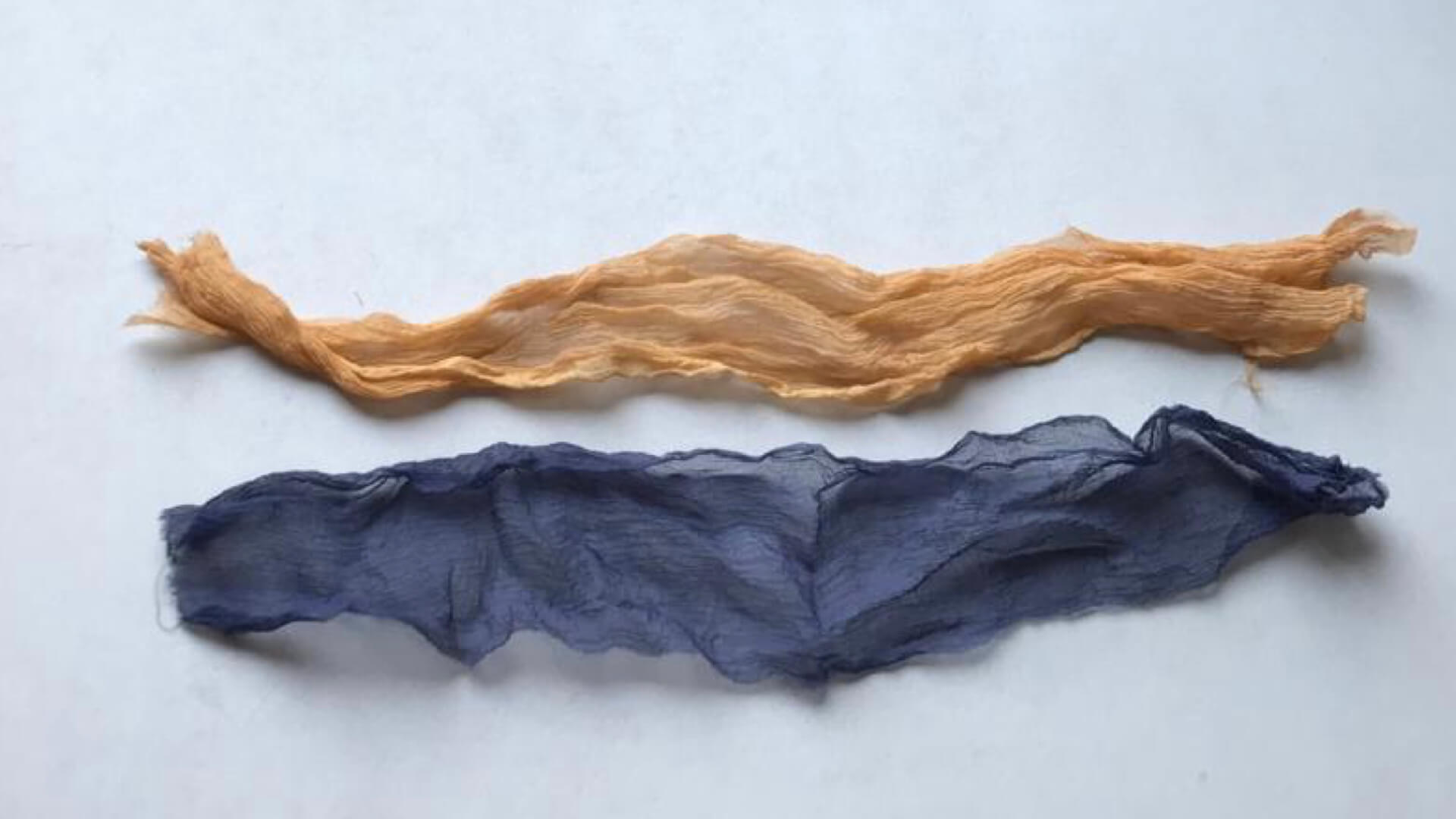
Beautiful silk
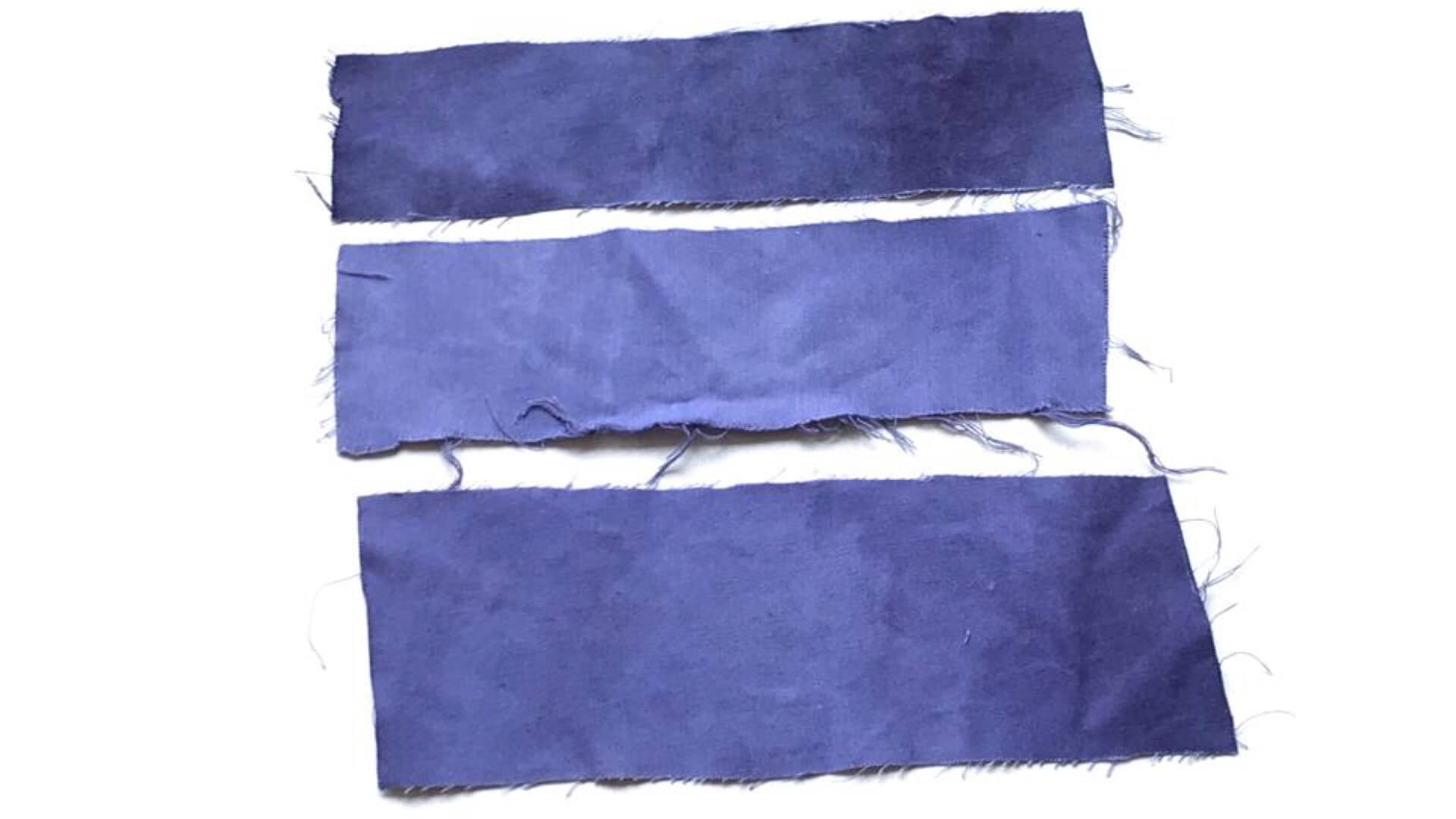
Cotton

Jersey
Inspiration¶
Once I started looking for inspirational images for natural textile dyes I discovered there are quite a few people working with them. The colours one can create are everything but dull and plain, and myths about fast fading aren't necessarrily true as the tapestry below proves.

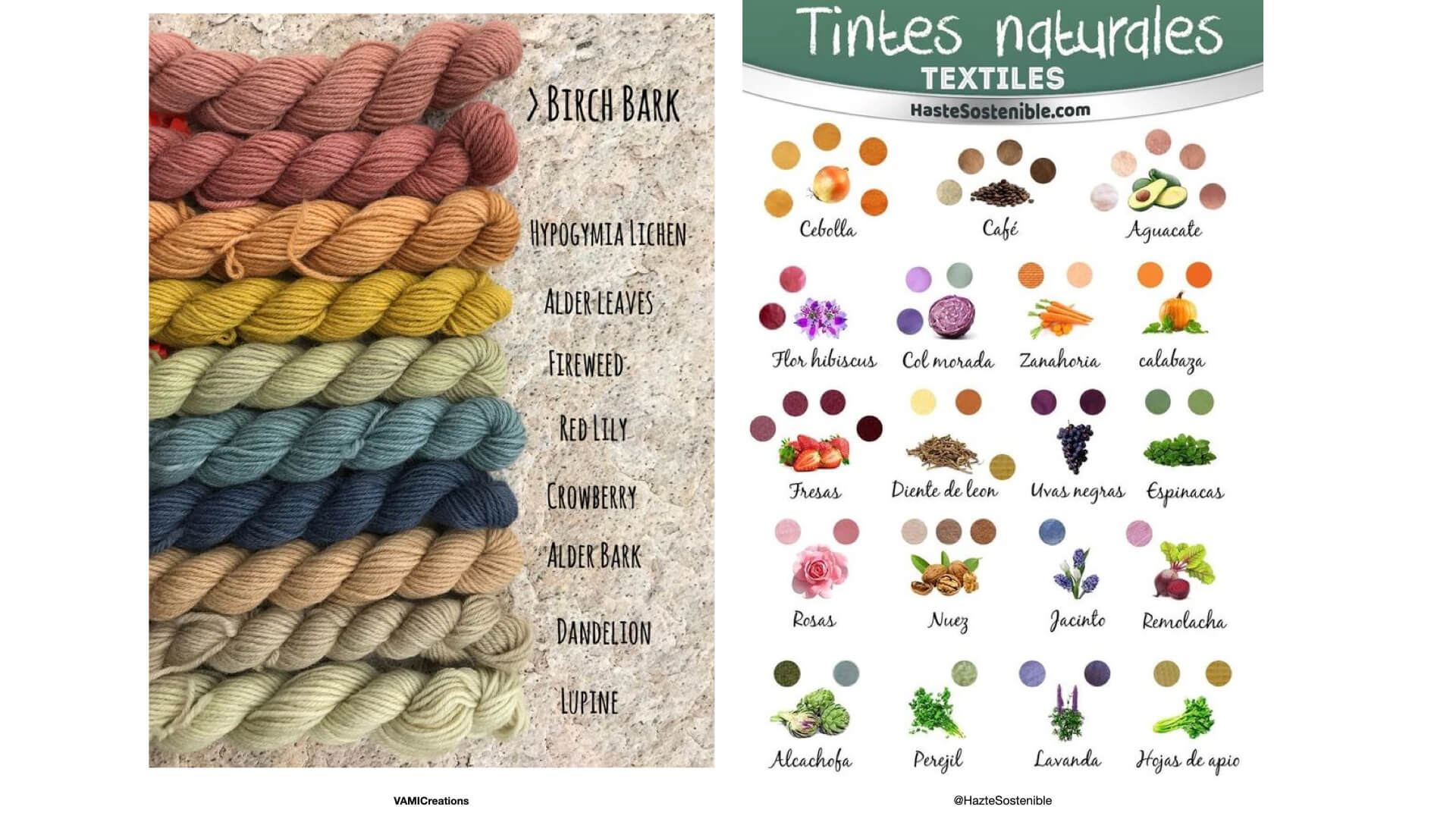
Beautiful bacteria indeed. Can't wait to see how my little silk croissant turns out. These are by Natsai Audrey Chieza.
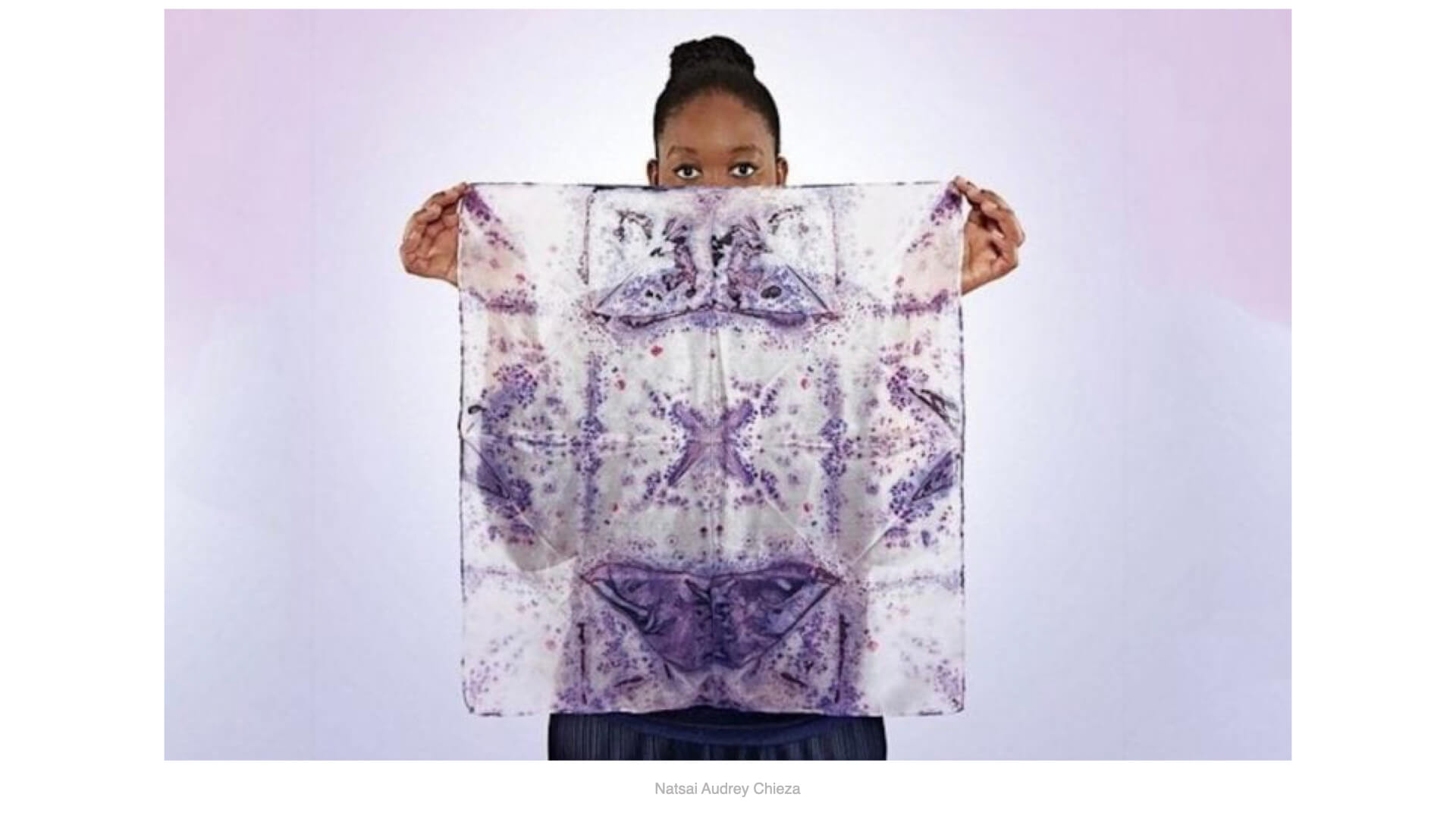
 Making sap green ink from buckthorn is definitely on the top of my list. Love the colour and know it will turn out beautifully with campeche purple.
Making sap green ink from buckthorn is definitely on the top of my list. Love the colour and know it will turn out beautifully with campeche purple.
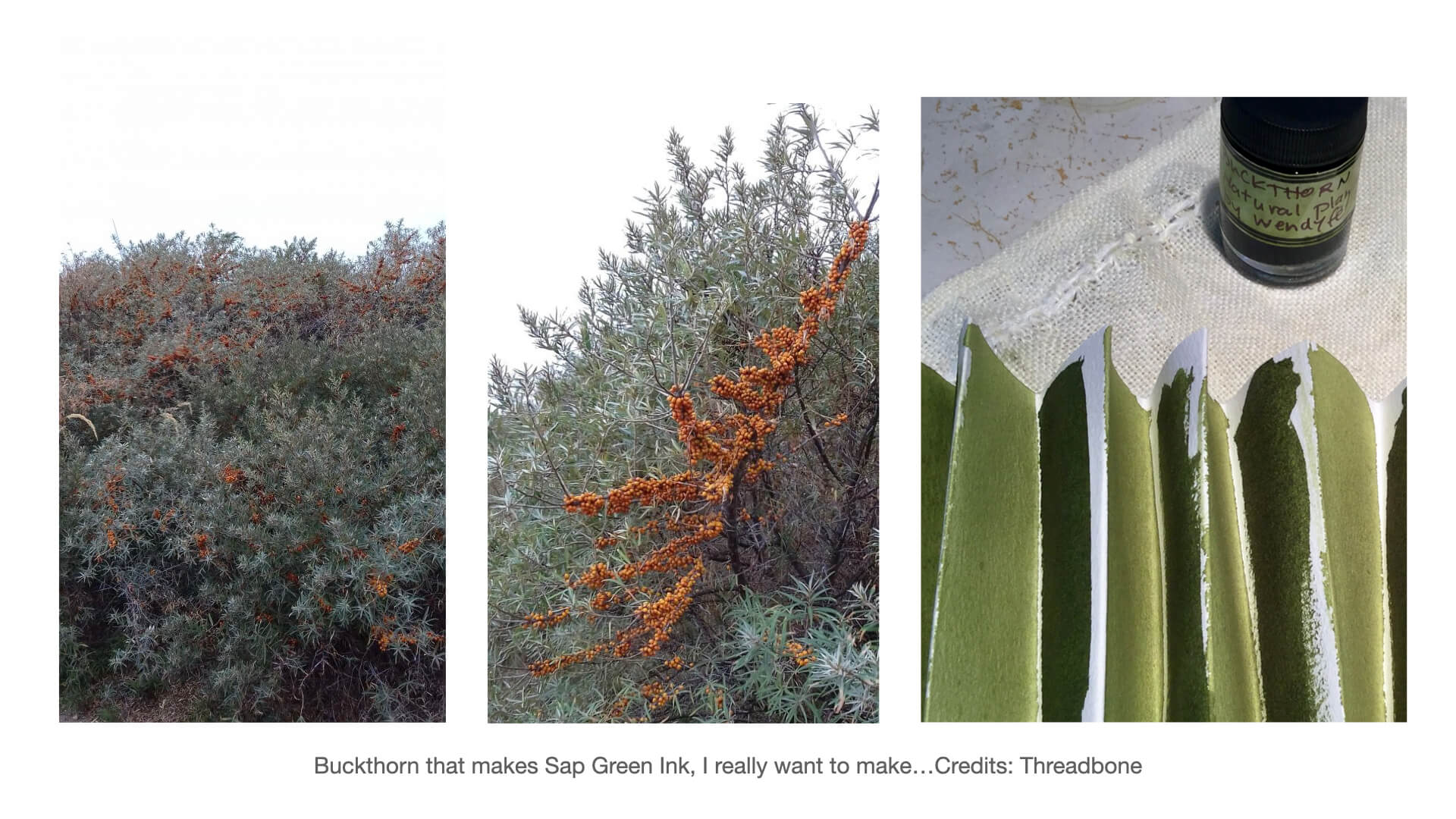 I treated myself to this book (below) and look forward to making my own collection of natural inks and watercolours.
I treated myself to this book (below) and look forward to making my own collection of natural inks and watercolours.


Research¶
Ultimately, I recognized that one has to approach colors, considered as physical phenomena, from the perspective of nature first at all, if one wants to gain something about them for the purpose of the art.
Johann Wolfgang von Goethe (1788)
The Newton-Goethe polemics¶
Having obtained a PhD in the humanities, I'm familiar with Johann Wolfgang von Goethe (1749-1832) writer, poet and author of Faust and, of course, The Sorrows of Young Werther (1774), which describes the despair and eventual suicide as a result from unanswered love for a young woman named Lotte. I also knew Goethe had writen about colour in Zur Farbenlehre (1810), but I didn't know this was the starting point of a 40 year long study into light and colours through which Goethe wanted to demonstrate that Newton's results in optics were incorrect.
In a 1672 letter, Isaac Newton (1642-1726) writes about how he prepaired his lab to study “the celebrated Phenomena of Colors. And in order thereto having darkening my chamber, and made a small hole in my window shuts, to let a convenient quantity of the sun light, I placed my Prisme at his entrance, that is might be thereby refracted to the opposite wall. It was at first a very pleasing divertissement, to view the vivid and intense colors produced by thereby ...”. In 1704 he publishes his seminal works Optics, dealing mainly with light, and as such, immaterial colour.
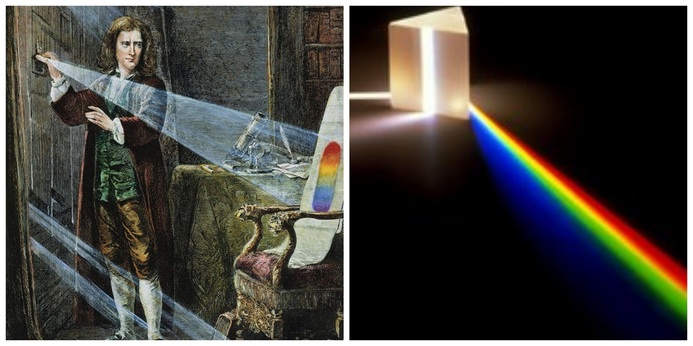
I like the way in which Newton describes how he prepares his lab and finds pleasure in his discovery. Even though we haven't been accomplishing ground-breaking new research, the situation is reminiscent of what we are doing: experimenting, drawing upon knowledge out there, but also discovering our own intuitive paths, experiments and results.
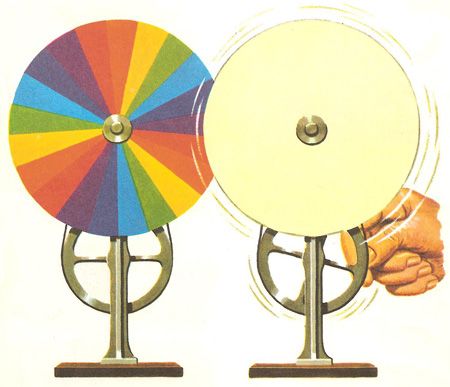
Whereas Newton 'proved' that all colours are harboured in white light, Goethe had a less rational, more poetic and intuitive approach. Perhaps not unlike the differences between the rational, socratic Plato and the more intuitive, art loving Aristotle, even though this is, of course, quite bluntly put.
Goethe being a humanistic genius, rather than the natural scientist Newton was, however, adopted an Aristotelian theory, which claims that colours represent a mixture between light and darkness. Goethes criticism towards Newton was apparantly "surprisingly virulent, better suited to a merciless exchange of panphlets than a scientific dispute" (Barsan, Merticariu, 2016).
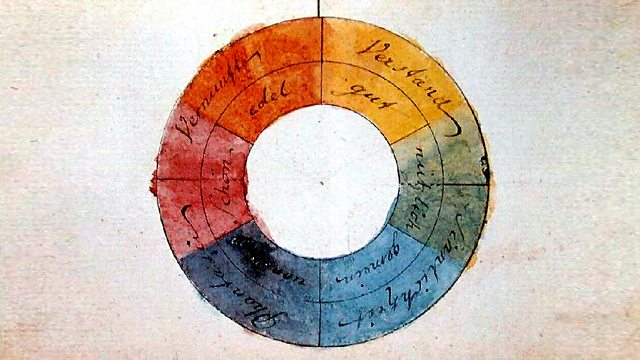
Goethe’s colour wheel, 1809. (Credit: Freies Deutsches Hochstift / Frankfurter Goethe-Museum)
During a journey in Italy, Goethe noticed that artists used science in many instances when painting, think of the usage of measuring perspective alone, but noticed that they didn't do so with regards to colours. This inspired him to a systematic study of colours in which he tried to explain that colours result from the light-darkness polarity. Moreover, in the early 19th century there was a want to codify and classify all kinds of phenomena, including colours. But it was also the time of Romanticism in which practical uses and emotions adhered to colours and as such a affective approach to colours became important. Whilst this was what interrested Goethe, it couldn't have separated him more from Newton's already famous, esthablished and ultimate scientific aproach,resulting in the, now famous Newton-Goethe Polemics.
With my interest for both physics, science as well as art and affect, I think I just might be considered a daughter of both Newton and Goethe, at least when it comes to relating to some theories about colours.
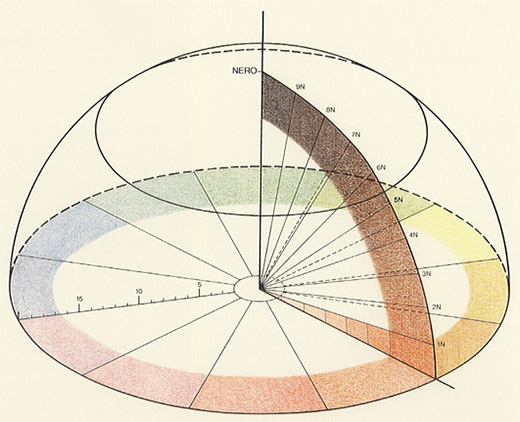
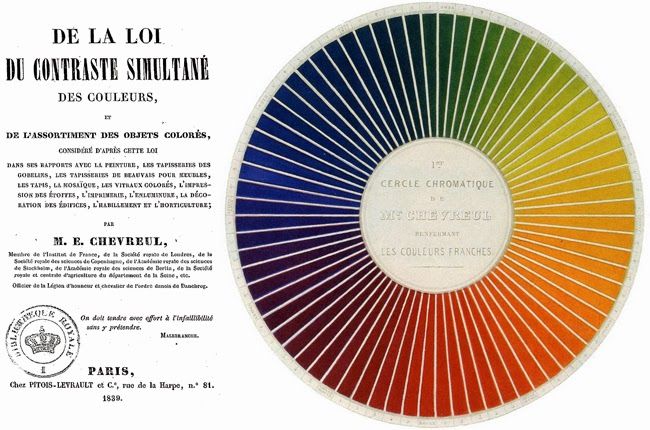
Once you start searching for colour wheels, you find many. The ones above are by Michel Chevreul (1830) and were used by artists like Vincent van Gogh, to determine which colours would work well together.
My very first - last century - colour chart¶
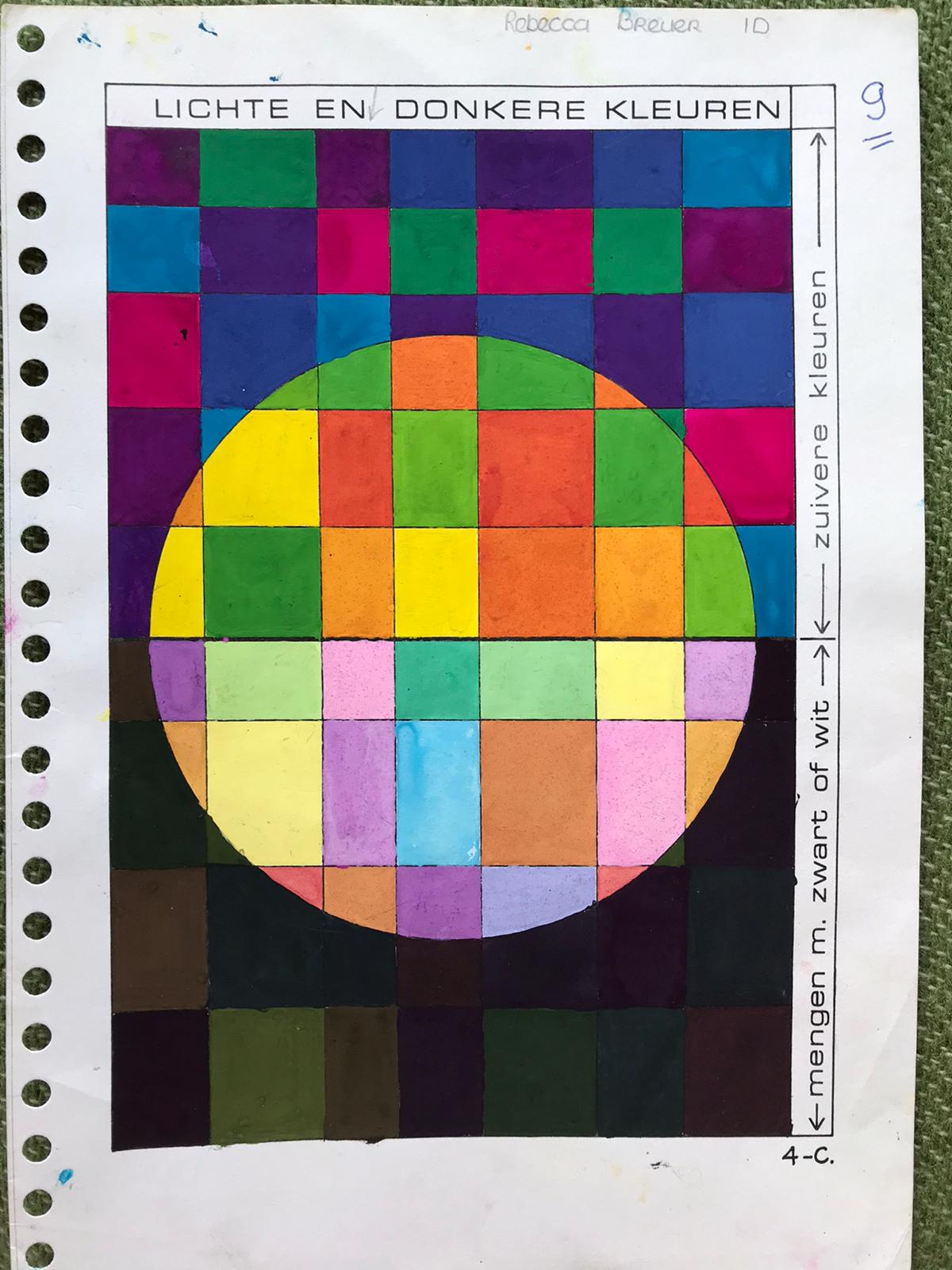 During my first year at secondary school, at the age of 13, I was asked to make a colour chart in gauche. I remember the teacher, and now realise that he was most probably more like Newton than like Goethe, because I remember him being strict, lacking expressive creativity and emphasising we needed to paint within the lines. I, nevertheless, succeeded in obtaining a 9 out of 10, but am happy I encountered more creative and open-minded teachers and instructors thereafter.
During my first year at secondary school, at the age of 13, I was asked to make a colour chart in gauche. I remember the teacher, and now realise that he was most probably more like Newton than like Goethe, because I remember him being strict, lacking expressive creativity and emphasising we needed to paint within the lines. I, nevertheless, succeeded in obtaining a 9 out of 10, but am happy I encountered more creative and open-minded teachers and instructors thereafter.
Documentation¶
Doing Dyes¶
After an overwhelming presentation by Cecelia in which all aspects of Biochromes were addresed, see link here, on Tuesday afternoon, our working space had been transformed into a make-shift Covid-proof lab where, Wedmesday, we could all safely work (after we made sure not all 7 electric cookers were on the same socket ;)
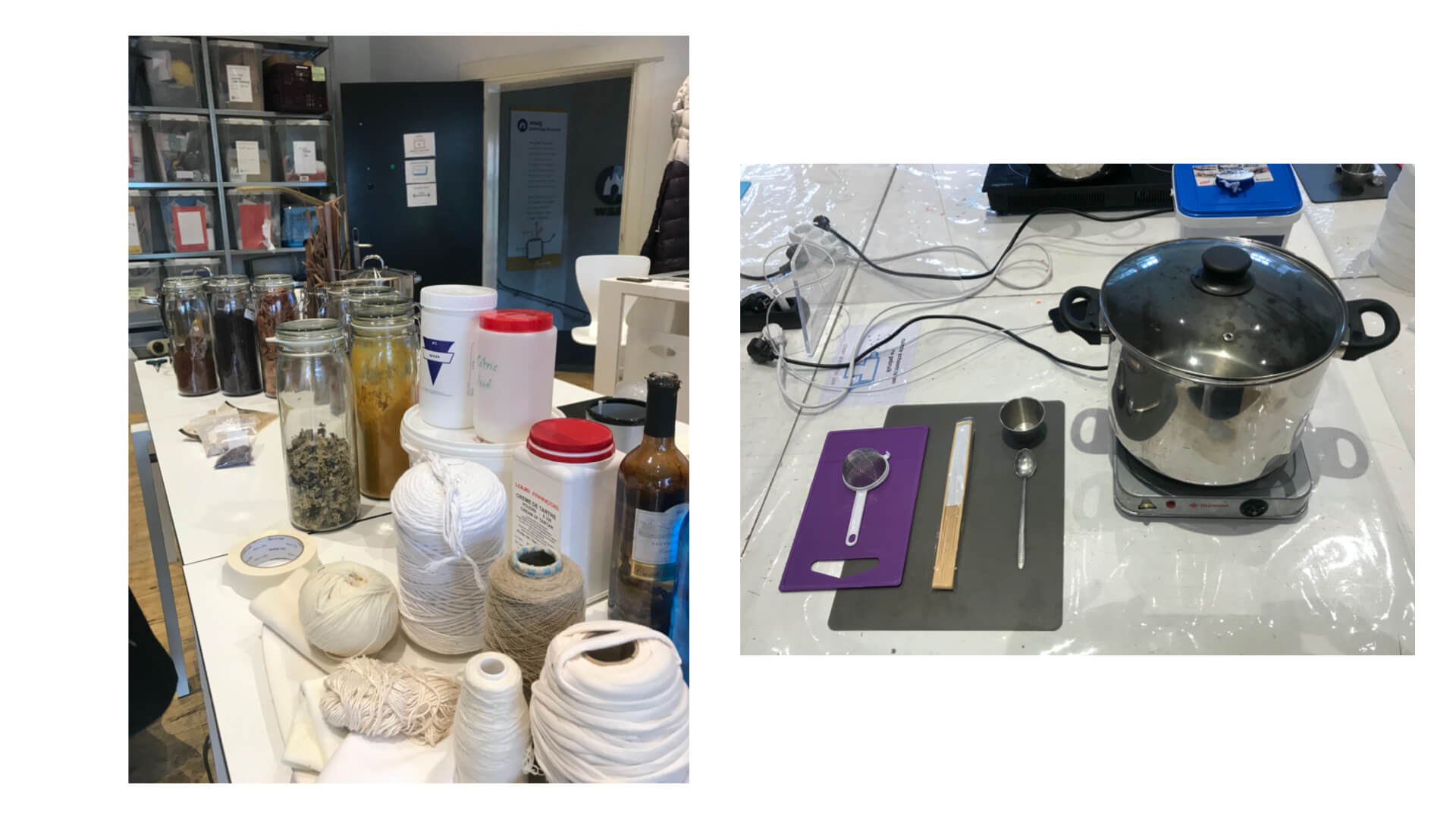
The space had changed overnight. There was a full lab situation with instruction desk in place and I settled in my own little production space with everything in place. Such a lovely and inspiring start.
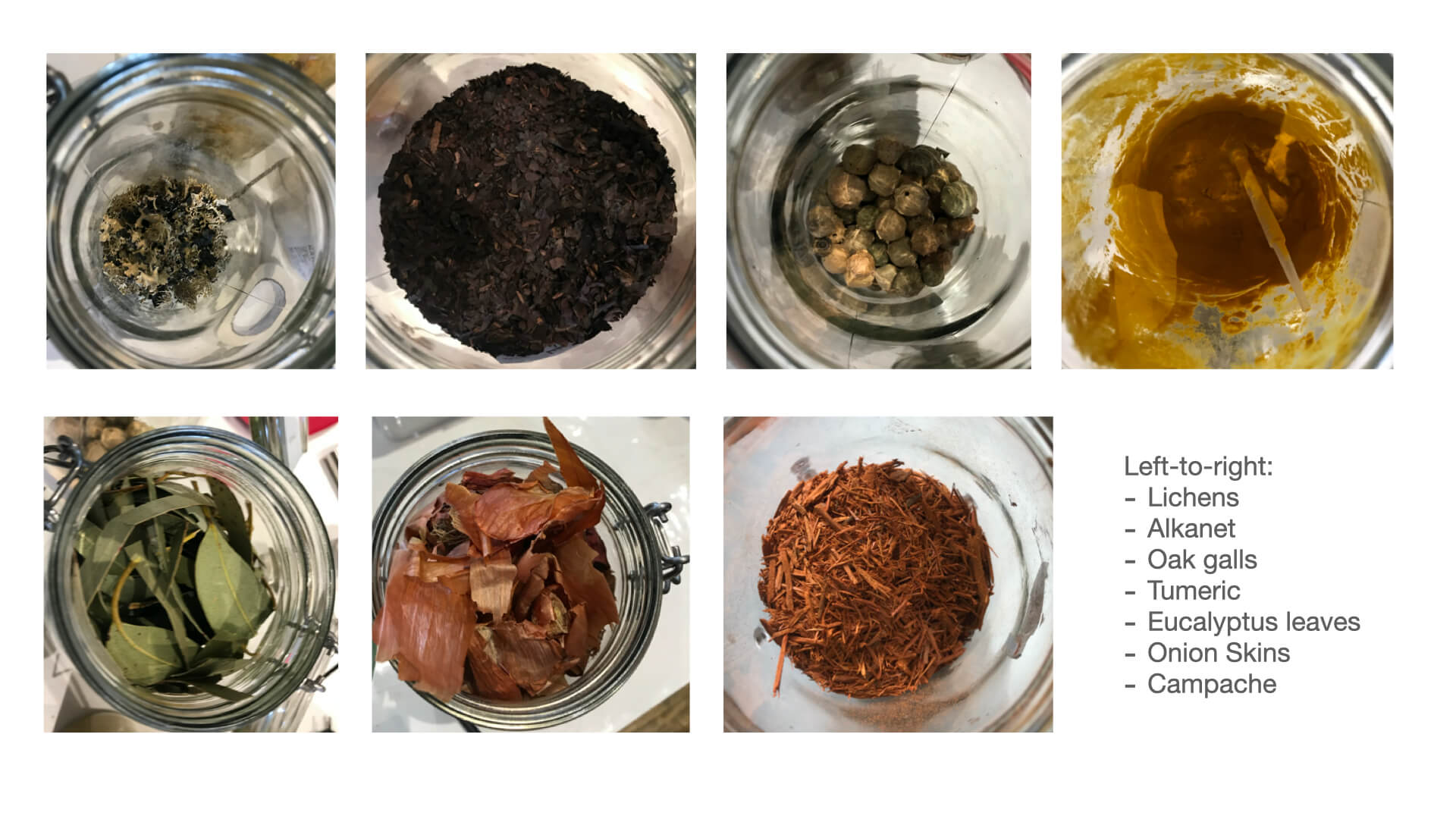
We were introduced to several natural materials that will dye fabric and yarns without polluting the environment nearly as much as the chemical dyes do.
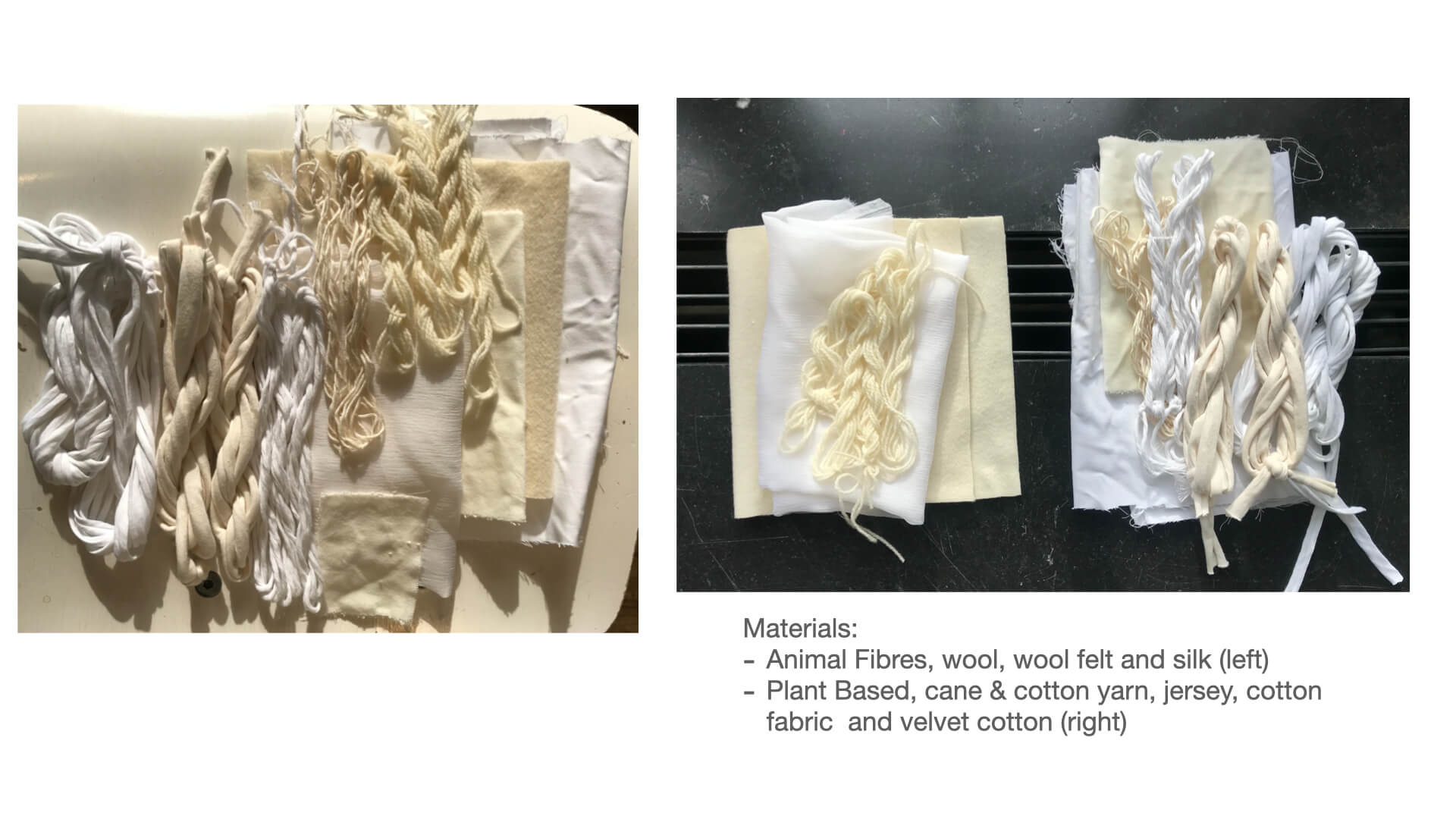

More natural materials, such as Eucalyptus bark, cochineal (tiny bugs), acorns and the beauty of them in the one spot with the right atmosphere.
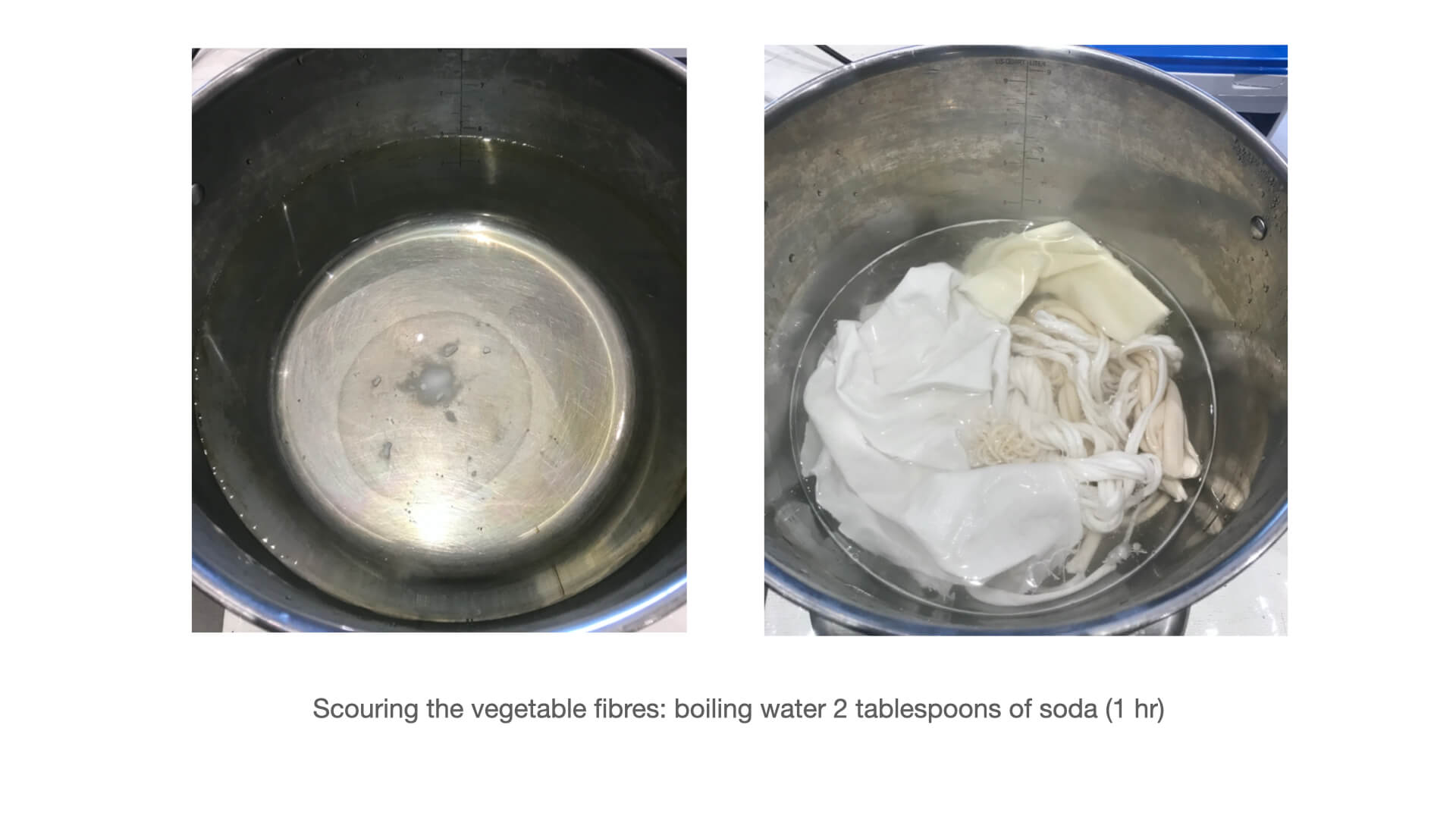
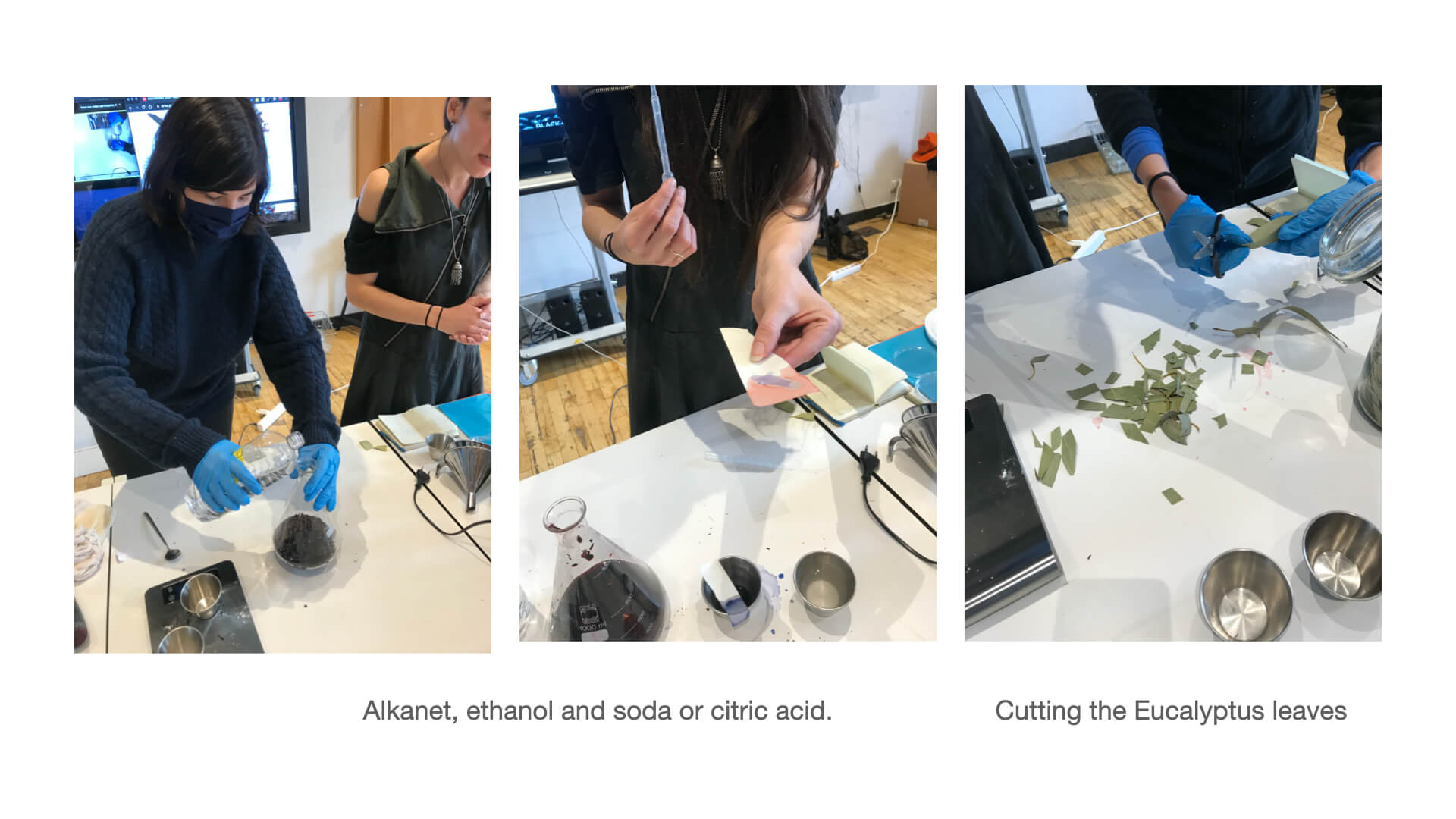
After scouring vegetable fabrics in hot boiling water with 2 tablespoons of soda (1 hr) and mordanting both animal and vegetable fibres in respectively 15% alum for the Weight Of Fabric (WoF)plus 8% creme of tartare for animal or 15% alum for vegetable fibres, we can start cooking the natural dye.
Vegetable Fibres: - scouring - boil in water including 2 tablespoons of soda, for about 1 hr, rinse. - mordanting - 15% WoF alum, for about 1 hr.
Animal Fibres: - mordanting - 10 to 20% WoF alum plus 8% creme of tartar, boil for about 1 hr, rinse.
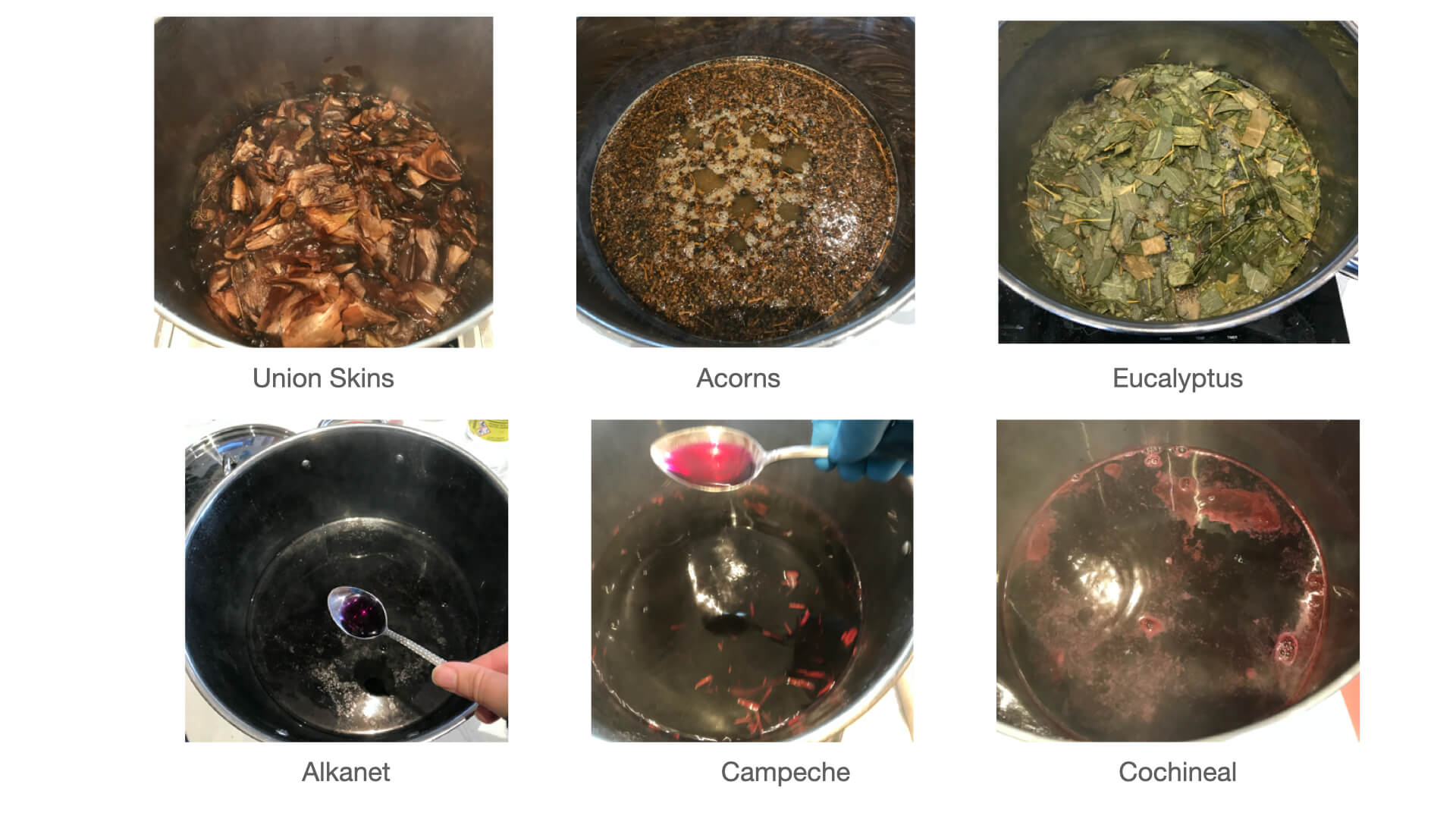
Our pots with, ehm, unified Onions...

Can't get enough of (displaying) last century documenting habits ;). Here summarizing the basics on paper with INK and COLOURS.
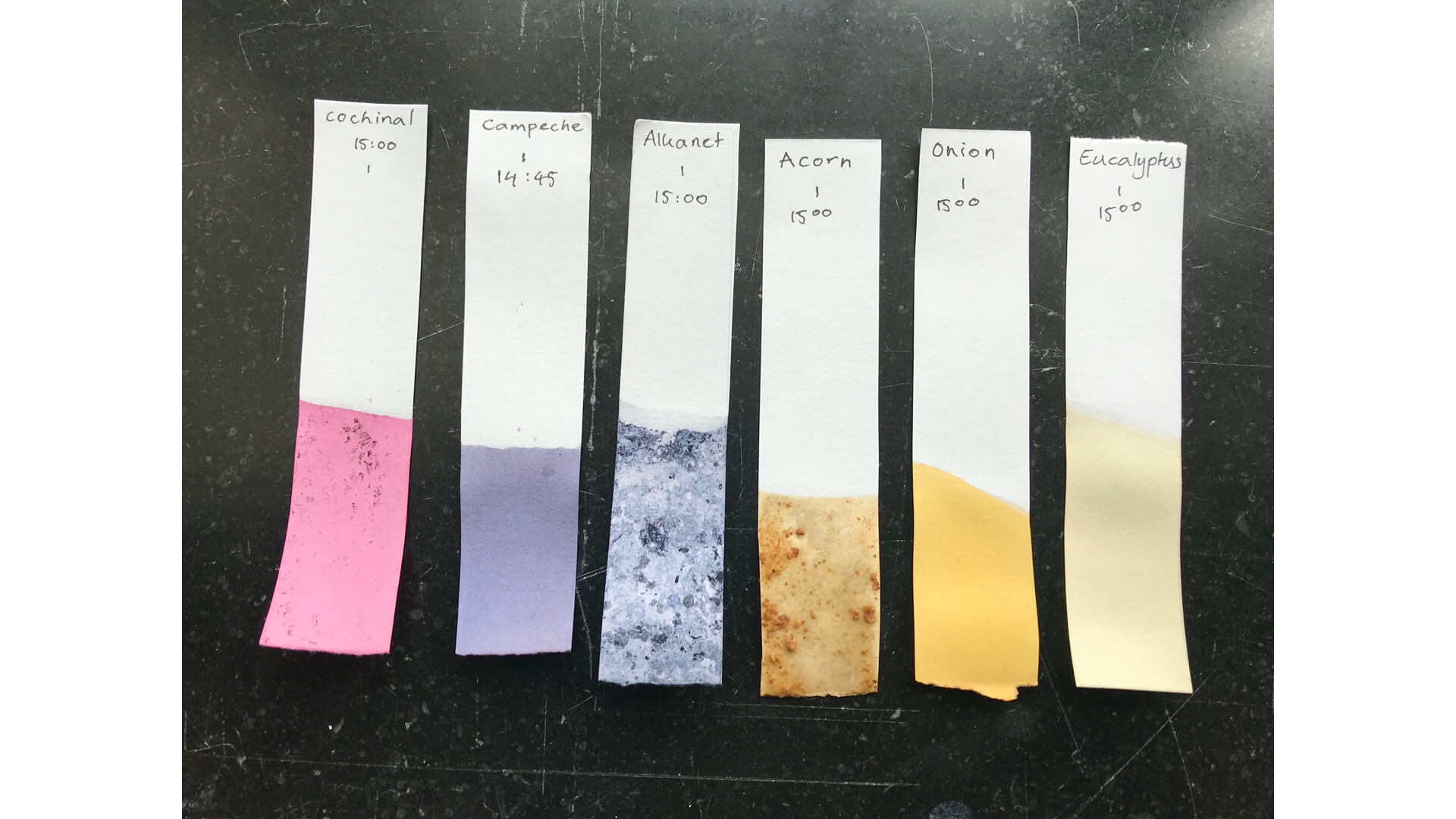
Collecting some paper trails from the surrounding pots
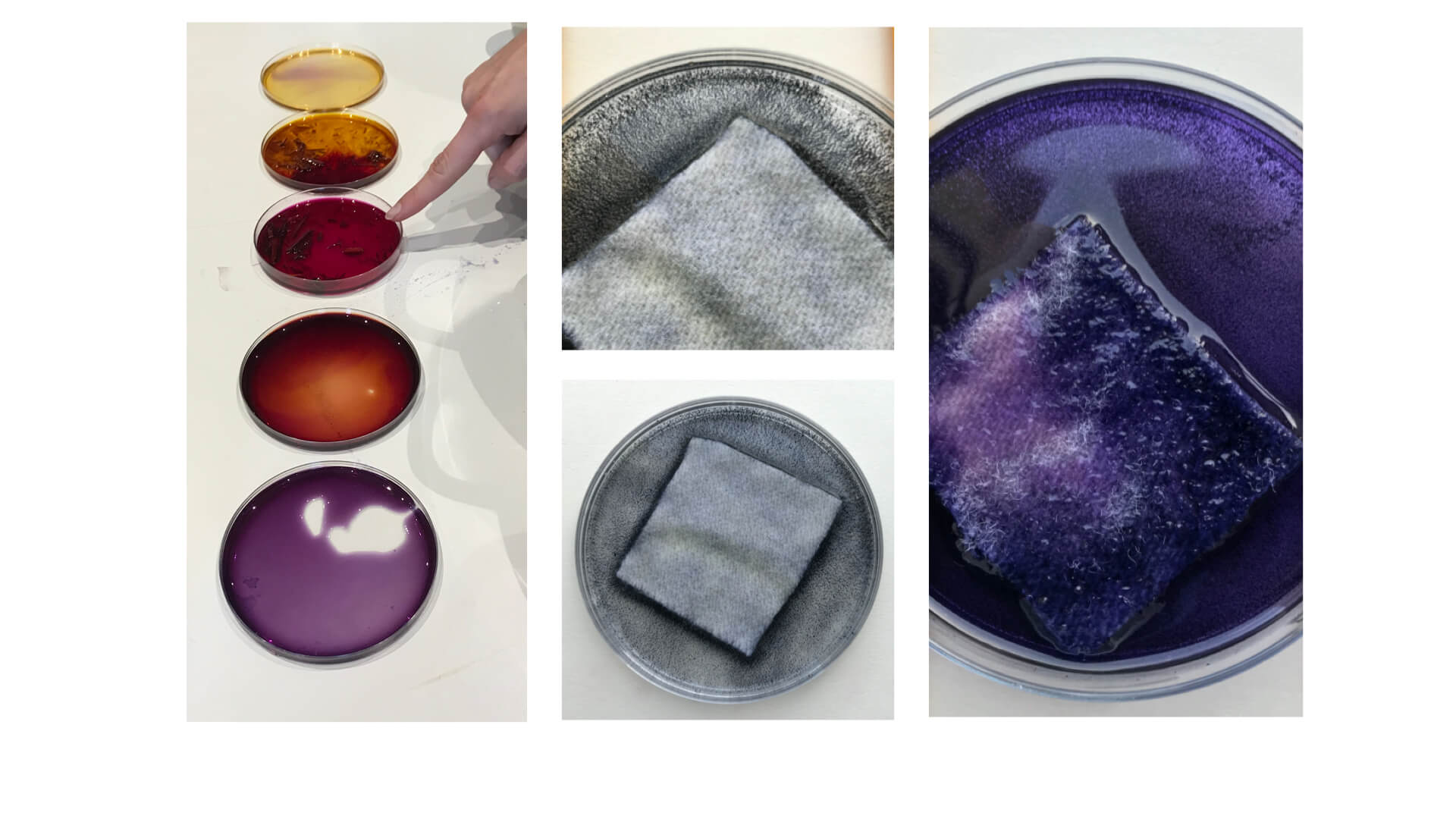
Left image: combining the one batch of Campeche dye with (top) citric acid, direct ethanol solluting, ethanol plus soda, soda, and the original dye. Right images: original dye with copper (grey) and iron (purple) showing pigmernts separting fom the fluid.

My fabrics and yarns, including a briliant yellow campeche dyed piece of silk due to adding citric acid to the dye bath. Incredible how we can make complementary colours from the same natural source. This was a wonderful experience, and there's more to come!
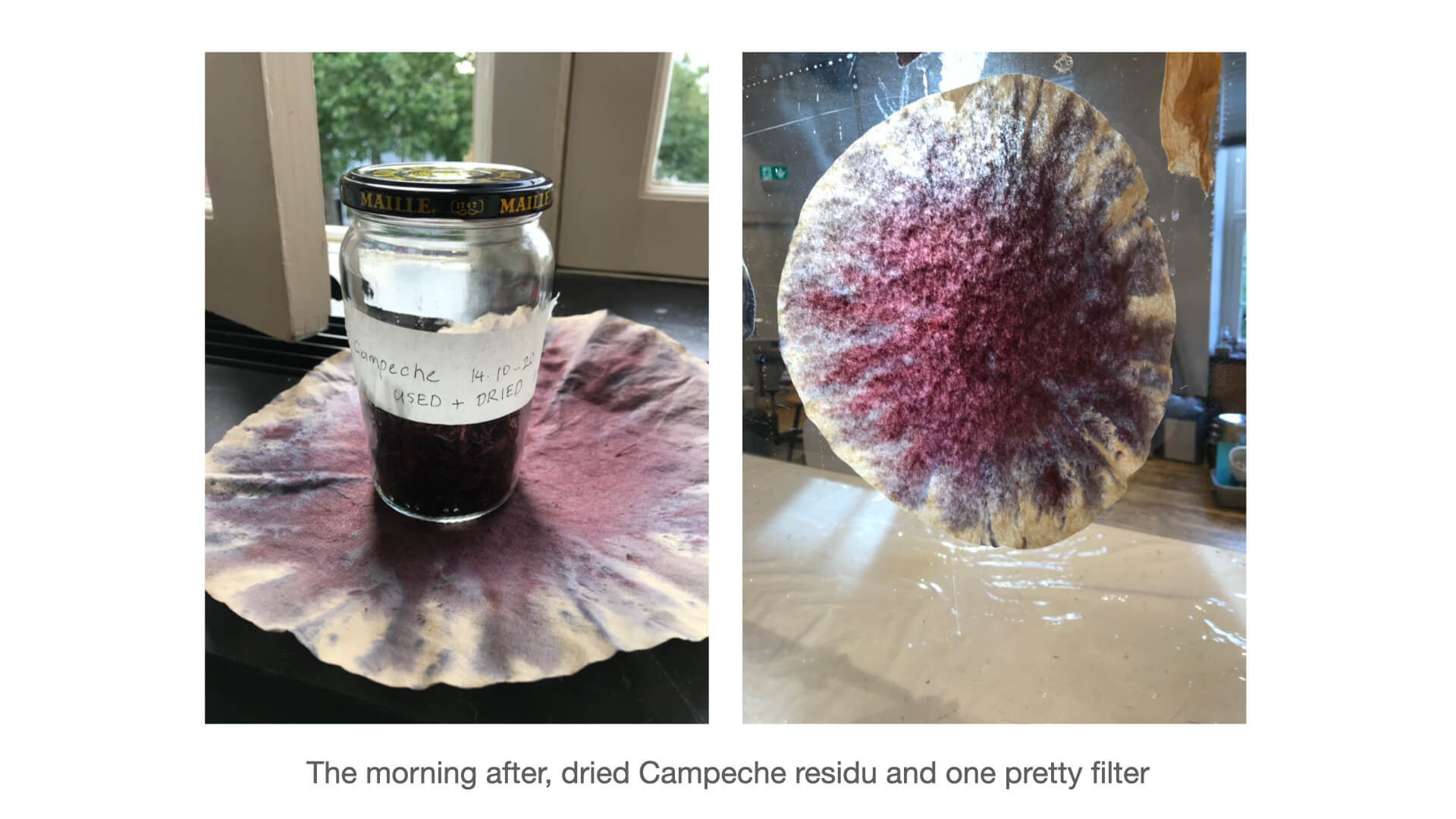
Beautiful Bacteria¶



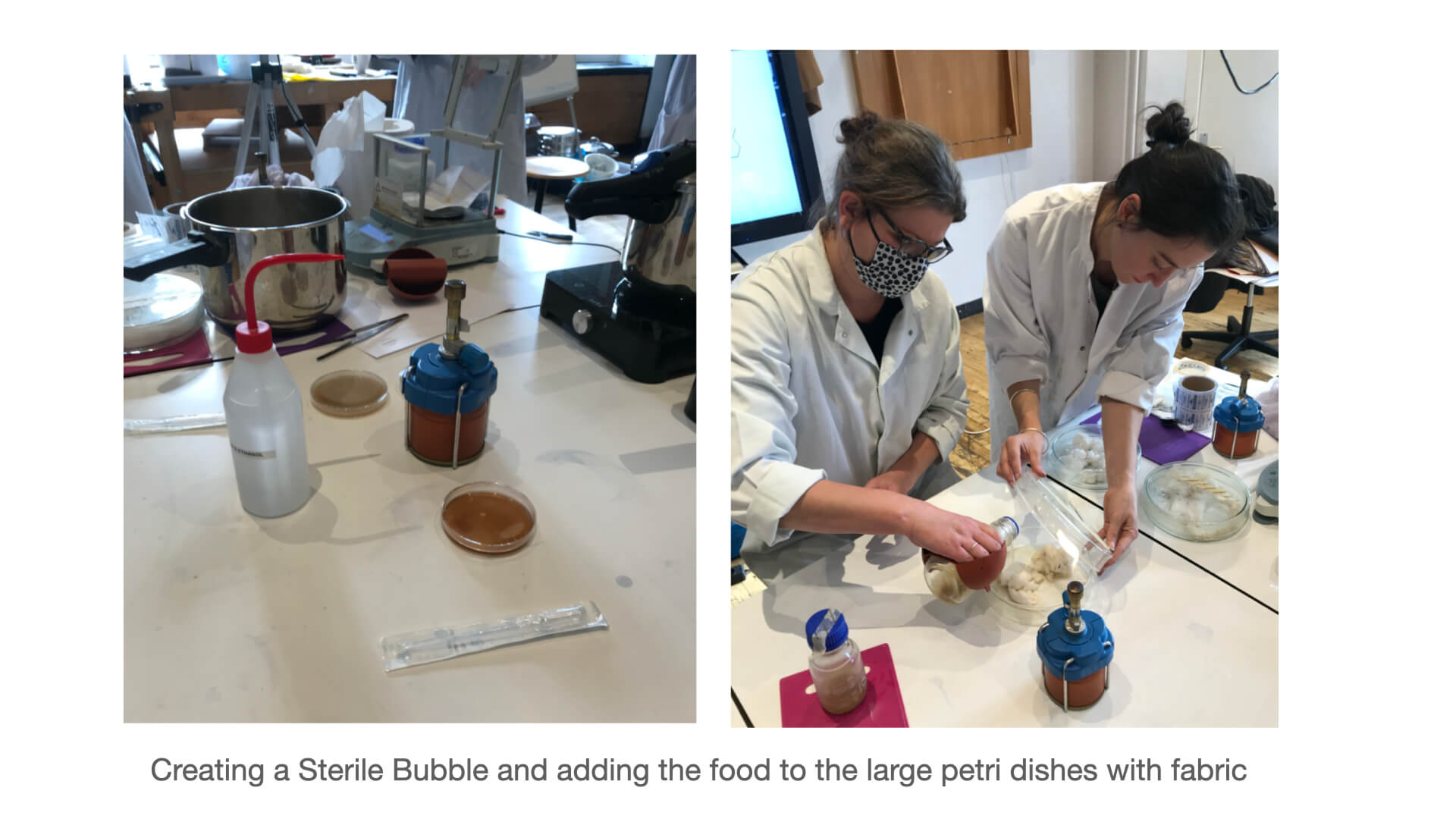


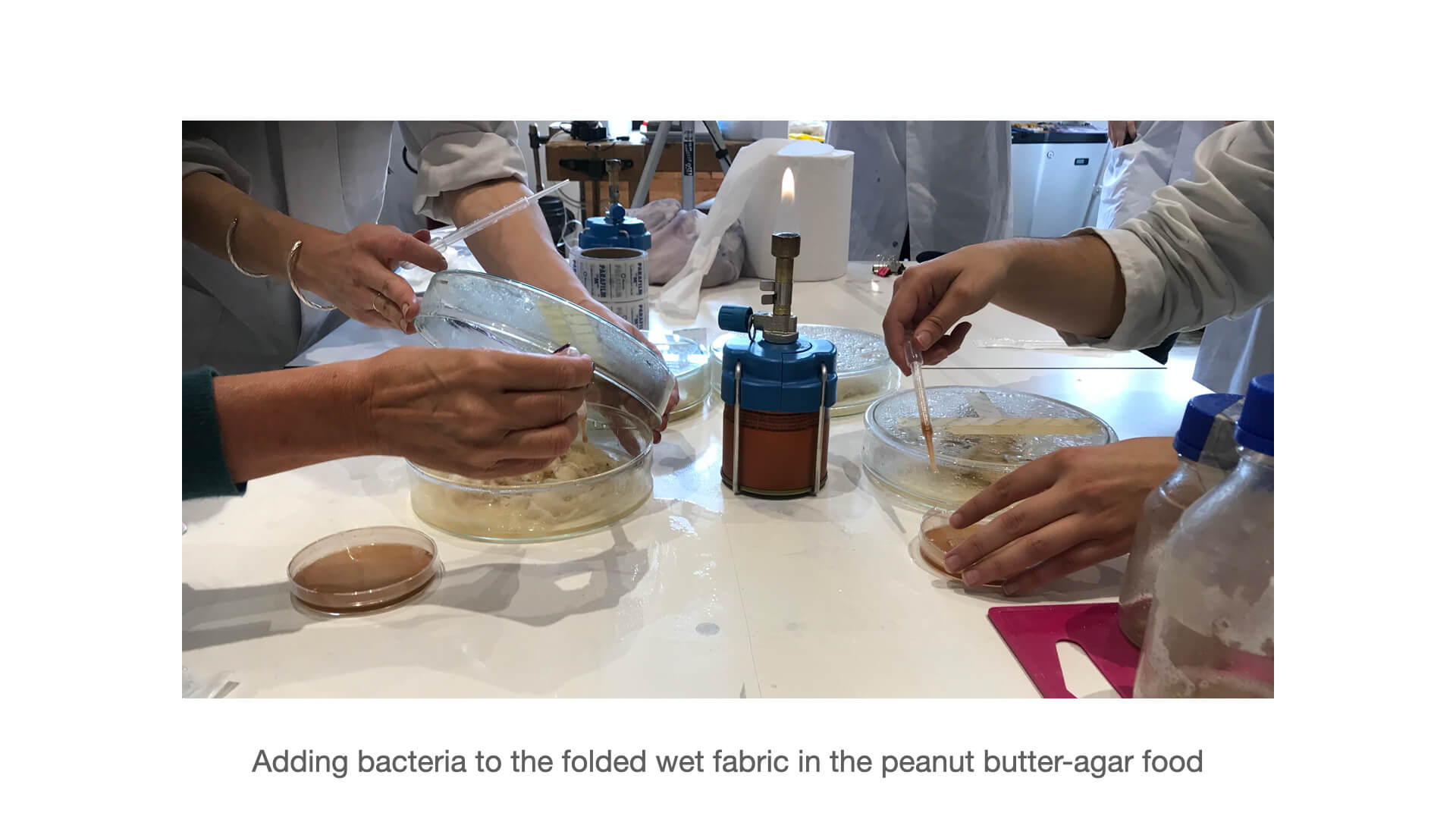
 After a few days in the incubator, it was time to kill the bacteria and check their work. We boilt the large petri dishes in the pressure cooker, let them cool and untied our little silk packages. Unfortunately the result was a little disappointing with the silk being only slightly tinted. My 'croissant' (silk package) was even completely white on one side. More bacteria, more food more time next time around, I guess.
After a few days in the incubator, it was time to kill the bacteria and check their work. We boilt the large petri dishes in the pressure cooker, let them cool and untied our little silk packages. Unfortunately the result was a little disappointing with the silk being only slightly tinted. My 'croissant' (silk package) was even completely white on one side. More bacteria, more food more time next time around, I guess.
Inspiring Inks¶
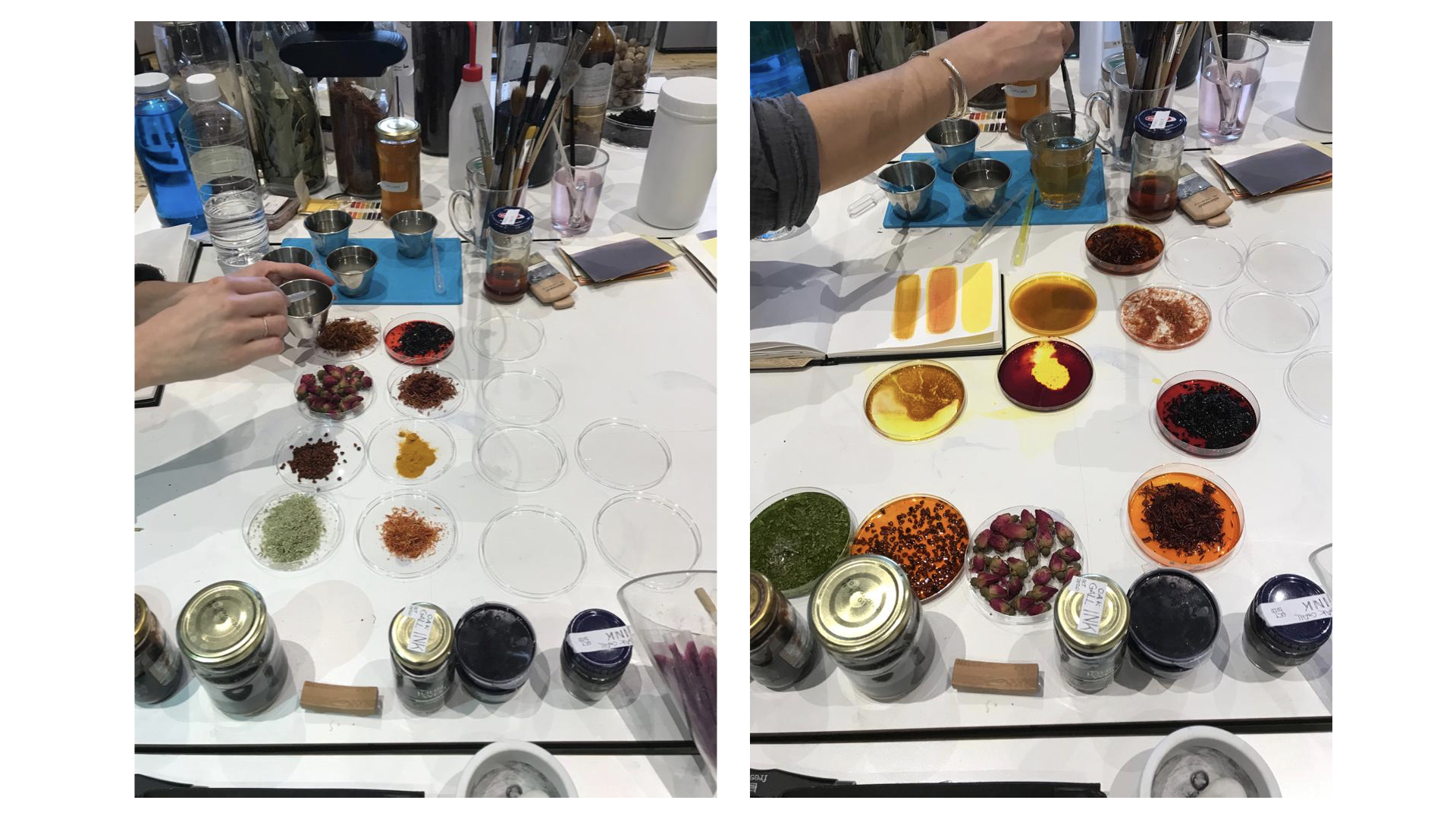
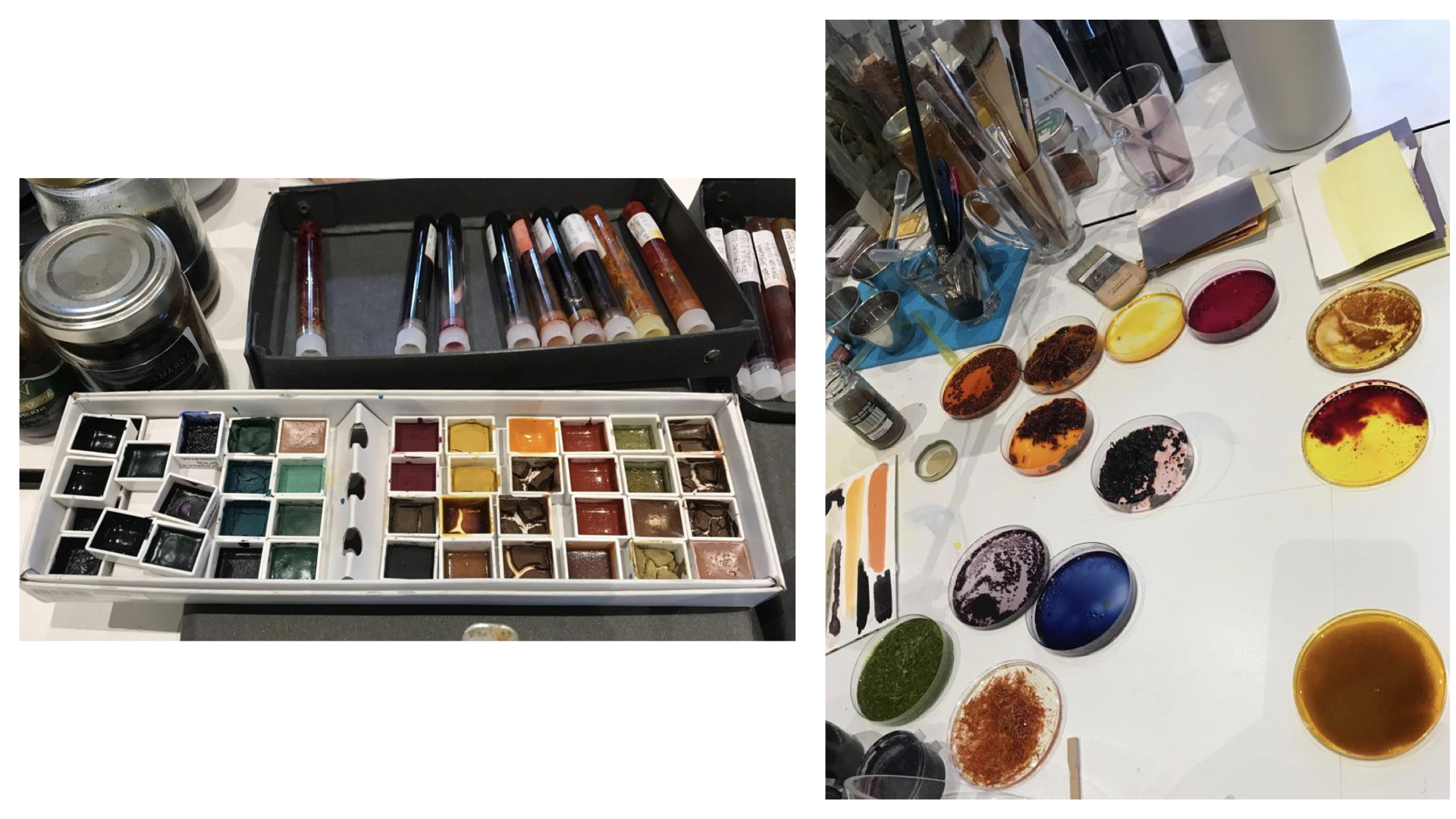 Making ink by adding ethanol to our natural dyestuffs and modifying them with soda, citric acid and copper.
Making ink by adding ethanol to our natural dyestuffs and modifying them with soda, citric acid and copper.
 My first try-outs, amazing!
My first try-outs, amazing!
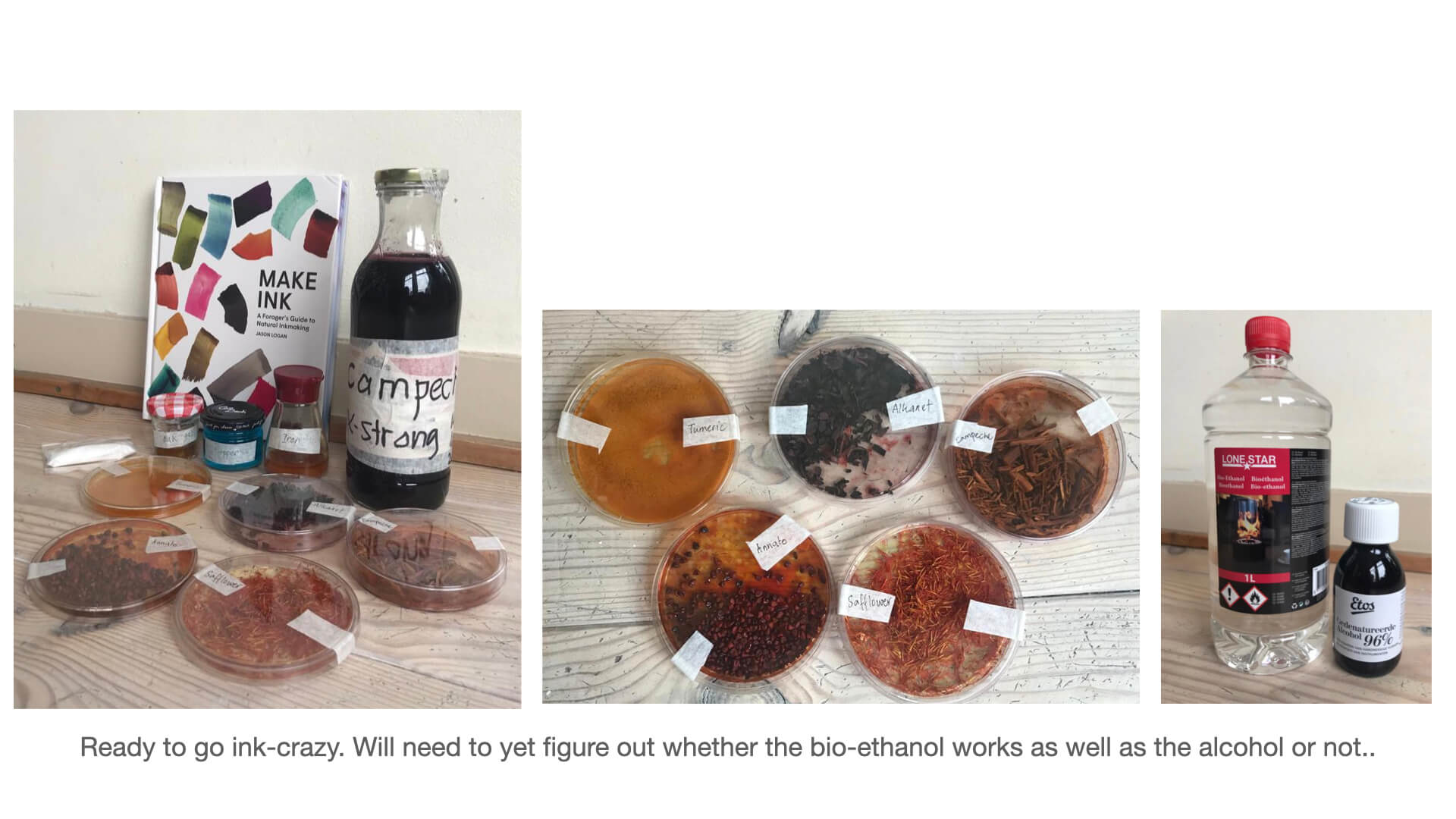 So... bought the book, and brought some leftover samples from the lab. Curious to find out what the difference between bio-ethanol and 96% alcohol will be. More to come!
So... bought the book, and brought some leftover samples from the lab. Curious to find out what the difference between bio-ethanol and 96% alcohol will be. More to come!
Pretty Pigment¶
It is amazing how much we can do with the one dye bath. The campeche made a wonderful batch of deep purple pigment, so beautiful. Can't wait to also make some sap green pigment from the buckthorn berries I hope to find during the weekend, and start my natural watercolour collection.
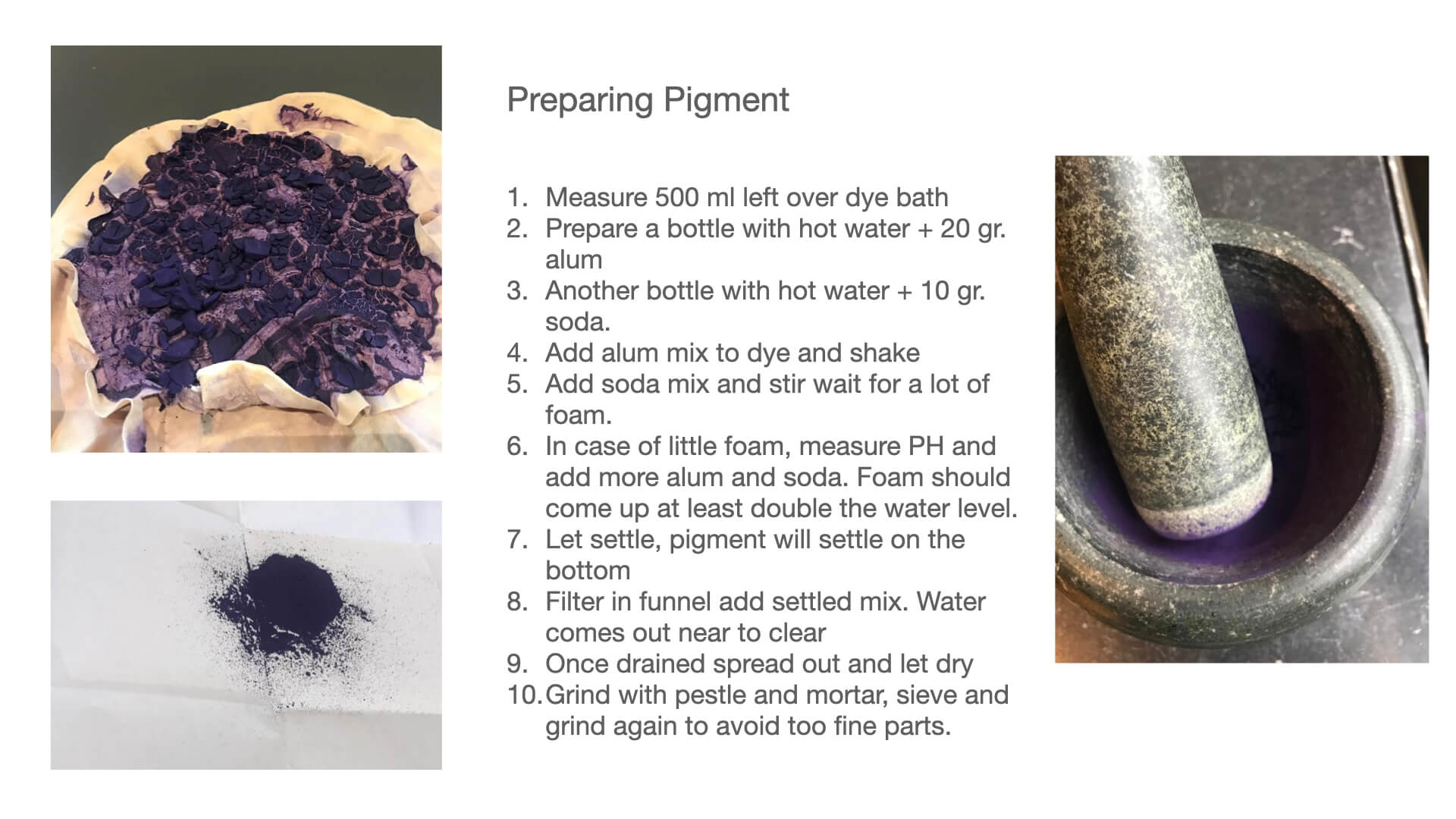
Revisiting Biochromes¶
I discovered sap-green and really wanted to make this colour/pigment since I think it will go well with the deep purple of the campeche. I did some research and found out that I would need berries of the buckthorm. This week (wk 5) I drove to the dunes and found some Buckthorn shrubs, with mega thorns indeed, and plenty of succulent orange berries. I gathered a bunch, and started 'cooking'.
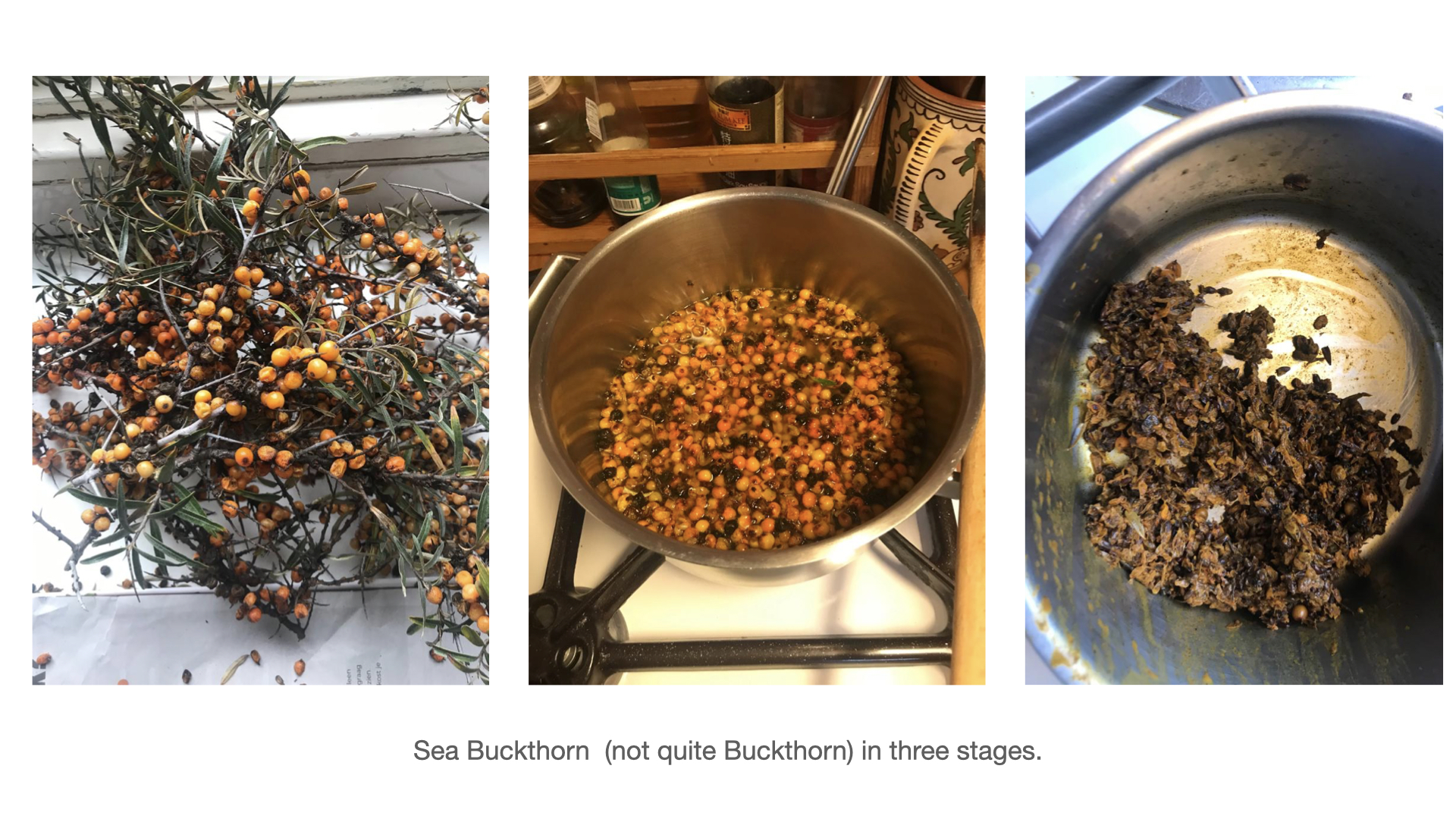

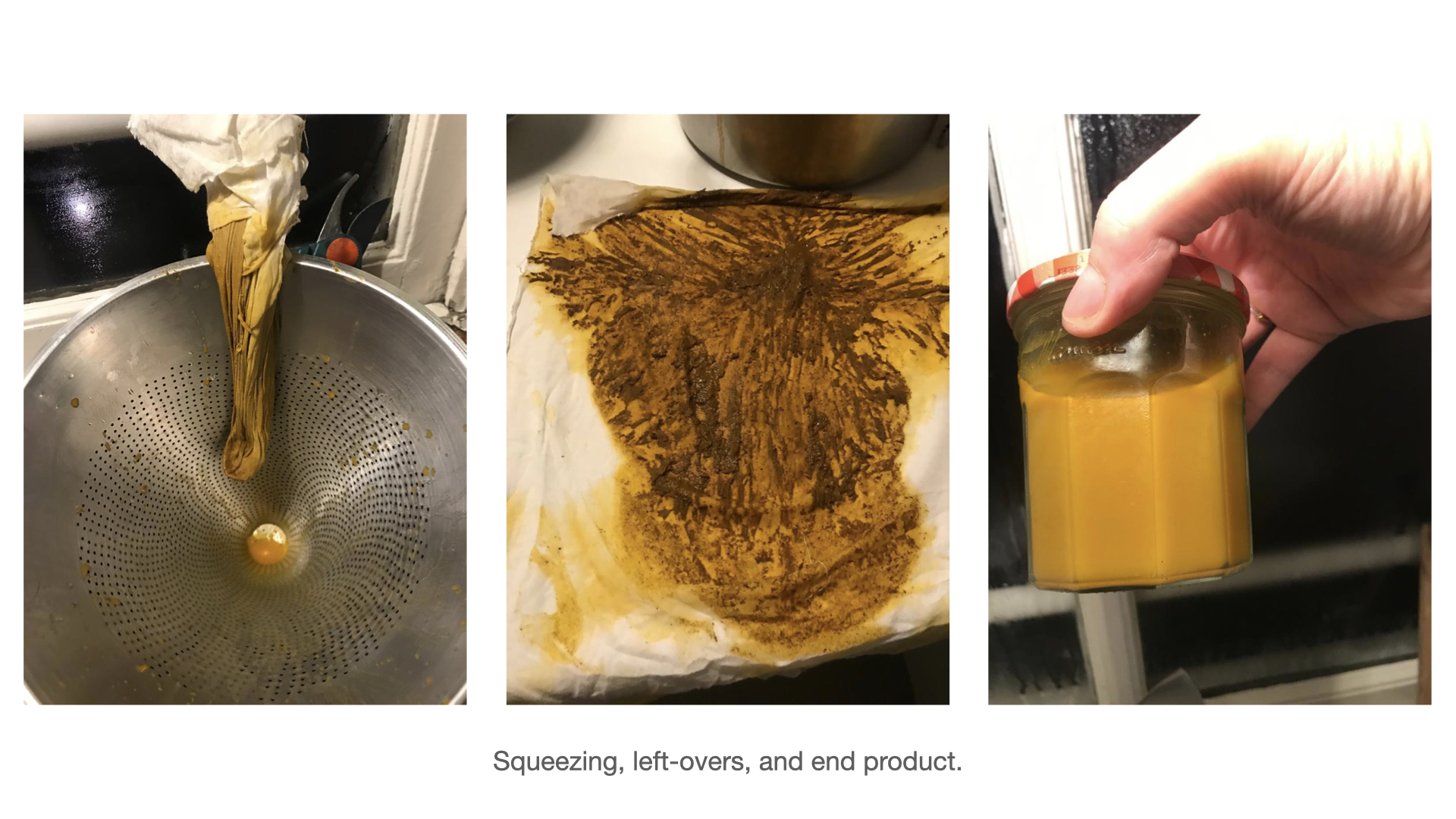
When your daughter needs to do an assignment for school¶
'Mum, I need to dye textiles with natural materials.' Yes, such a great assignment, we teamed up and decided to use some old cabbage and I had collected onion skins during the past few weeks, so there we went. The teacher advised us to boil the cotton in a water-vinegar solution. I'm not sure why, but we decided to follow her recipe. All we did was adding the alum to the union skins and not to the cabbage, so that we followed the teacher's advice for the cabbage and my recipe for the onions. Below you can find her presentation, with my comments.
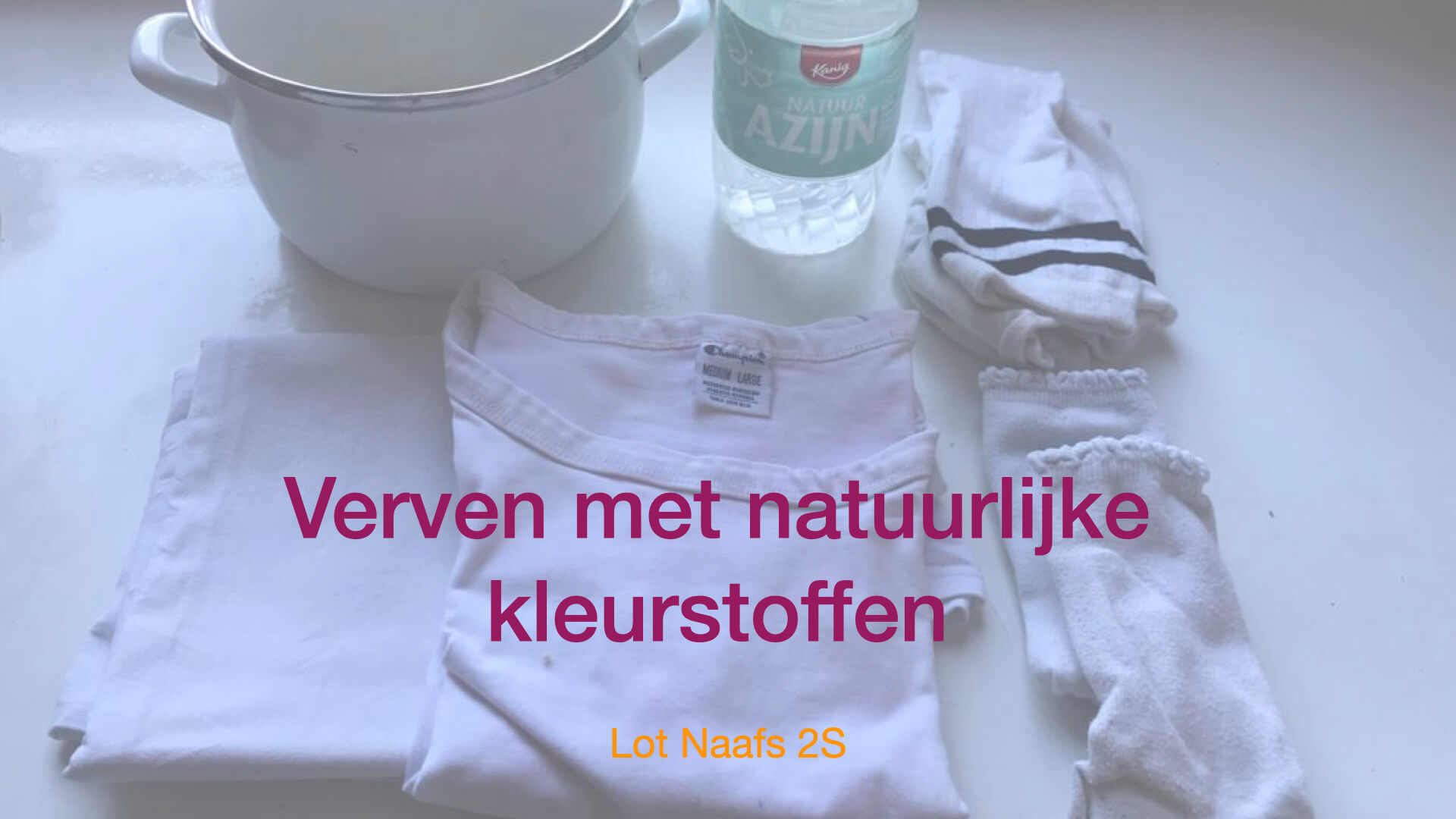
This translates into: "Dyeing with natural materials" and my daughter's name is Lot, 'Naafs' is her surname.
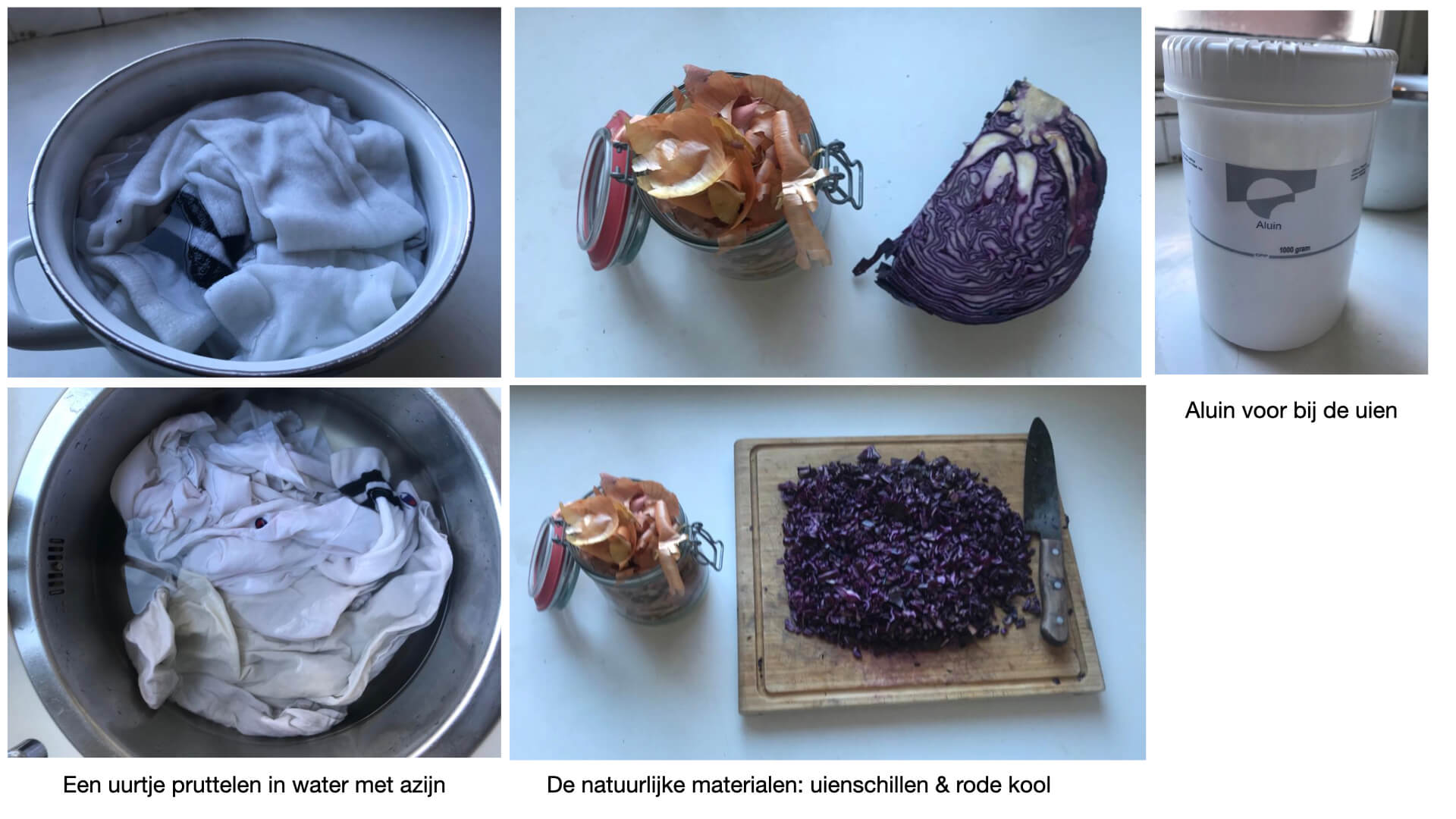
This translates into: "Boiling for one hour in water and vinegar. The natural materials onion skins and cabbage. Alum for the onion skins

"Boil the material for one hour, sieve and make little parcels of the clothing."
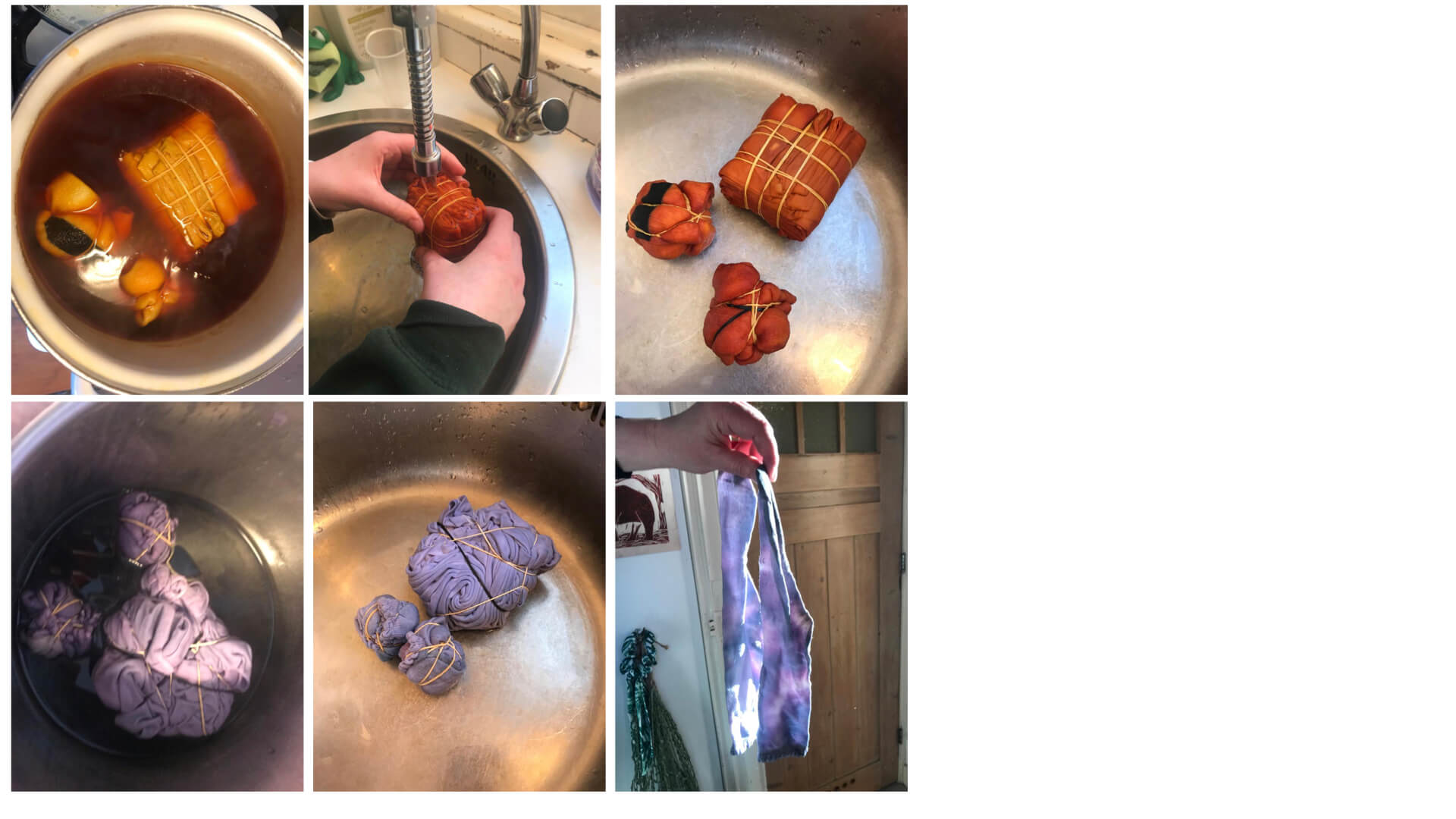
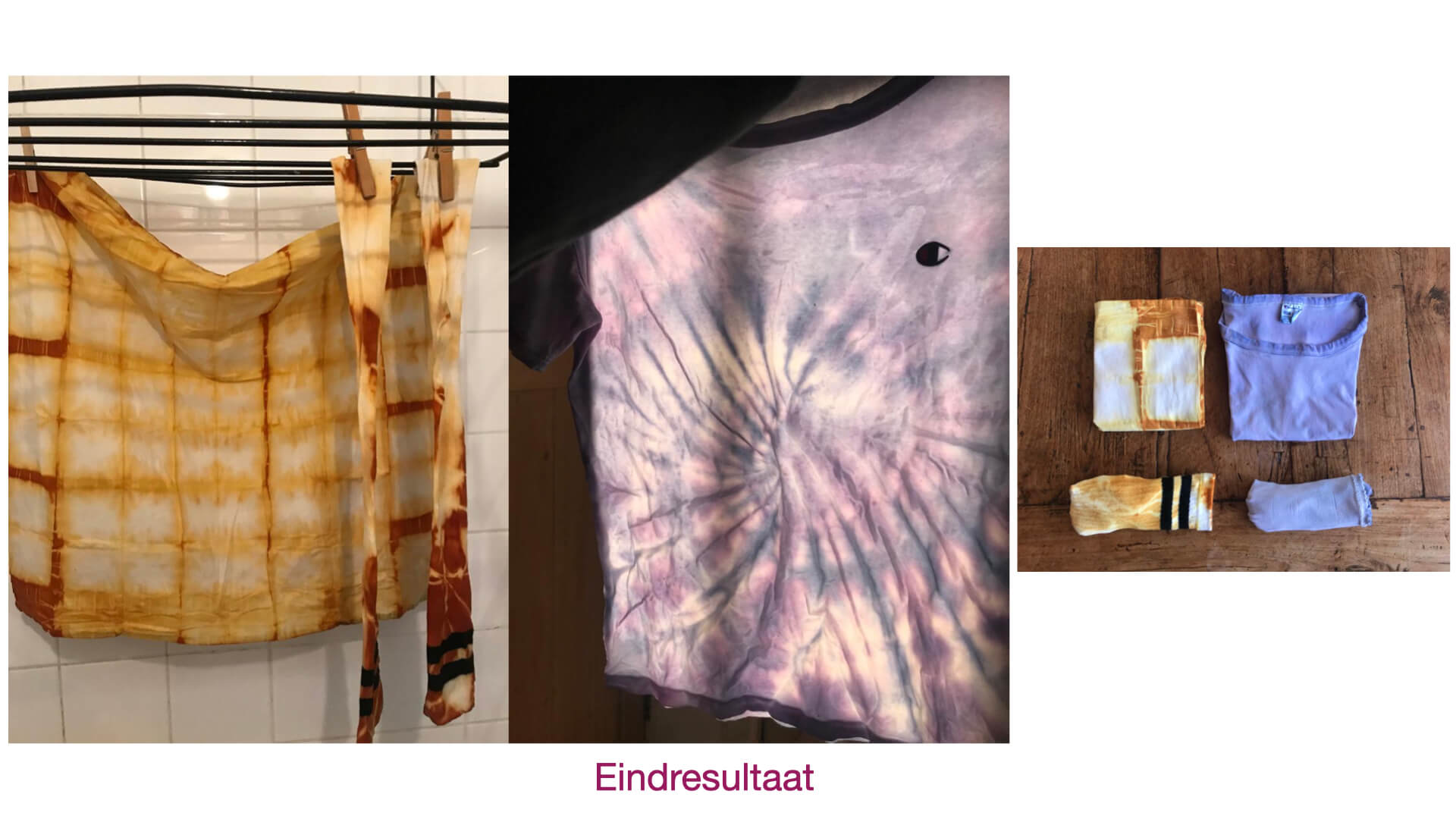
"End results"
We did cheat with this presentation, since the T-shirt came out of the bath like this, but while drying the pattern disappeared and the shirt ended up more or less one colour. I think we should have rinsed out the 'parcel' some more.
Useful links¶
- Cecilia's elaborate presentation, including recipes, know-how and all one needs to know about Biochromes
- Cecilia's presentation about inks and pigments
- A downloadable PDF on Goethe's theory of colours
- A BBC podcast about art, fashion and Goethe's colour theory
- A website dedicated to Abraham Werner's Nomenclature of Colours, late 18th century
- A Visual Catalogue of the colours mentioned in Goethe's Theory of Colours (1810)